Grey paver walkways blend modern elegance with enduring durability, transforming outdoor paths into standout design features. The neutral tones of grey pavers harmonize with lush greenery and architectural elements, offering a versatile palette for various landscaping styles. From sleek, minimalist slab arrangements to intricately patterned layouts, these walkways can elevate your home’s curb appeal and guide guests with subtle sophistication. With options like permeable pavers that support sustainable drainage and textured surfaces that enhance safety, grey paver walkways strike a balance between form and function. Their adaptability makes them ideal for front entrances, backyard gardens, and side paths alike. Let’s explore inspiring ways to design a grey paver walkway that reflects your personal style and practical needs.
1. Herringbone Pattern Grey Paver Walkway

A herringbone pattern in a grey paver walkway introduces lasting sophistication by arranging rectangular pavers at a 45-degree angle, resulting in interlocking zigzag lines that catch the eye. The subtle variations in grey hues within each paver lend depth to the design, while the crisp geometry of the herringbone layout complements both classic and modern architectures. To achieve this look, select high-quality concrete or natural stone pavers in consistent sizes, prepare a stable base of crushed stone and bedding sand, then lay each unit precisely to maintain uniform joints. This pattern not only enhances visual appeal but also distributes weight efficiently, making it ideal for high-traffic areas.
2. Running Bond Grey Paver Walkway

The running bond pattern brings a timeless rhythm to a grey paver walkway by offsetting each row of rectangular pavers halfway over the one below. This straightforward design reduces cutting, accelerates installation, and creates a clean linear flow that suits traditional and contemporary yards alike. Opt for pavers sized uniformly, such as 4-inch by 8-inch formats, and maintain staggered joints of 1/8-inch to highlight the pattern’s subtle elegance. A base of compacted gravel and sand ensures stability, while sealed joints protect against weeds and moisture. This layout enhances the perception of length, guiding visitors along the path and blending seamlessly with adjacent landscaping features.
3. Basketweave Pattern Grey Paver Walkway
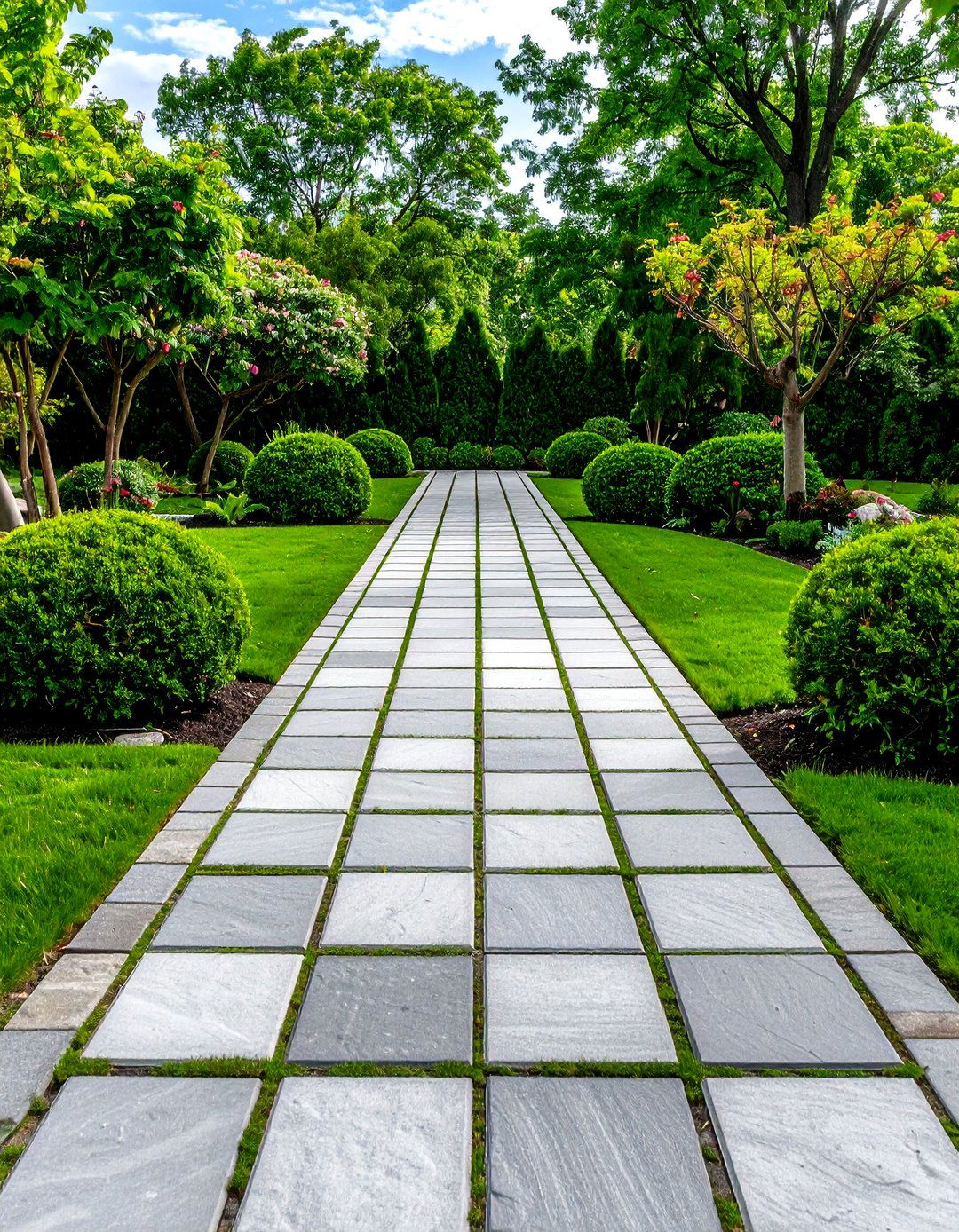
With a basketweave pattern, a grey paver walkway achieves a woven texture by setting pairs of square pavers perpendicular to each other, creating a crisp checkerboard-like effect. The alternating orientation of pavers produces a rhythmic visual appeal that pairs well with both formal gardens and casual landscapes. To execute this design, choose uniform square pavers—often 6×6 or 8×8 inches—and install them in linked pairs separated by consistent joints. The interlocking layout not only enhances stability but also evokes classic European cobbled streets. Complement the basketweave design with smooth edging stones in a matching grey tone to frame the path and accentuate the pattern’s structured charm.
4. Grass-Infused Grey Paver Walkway
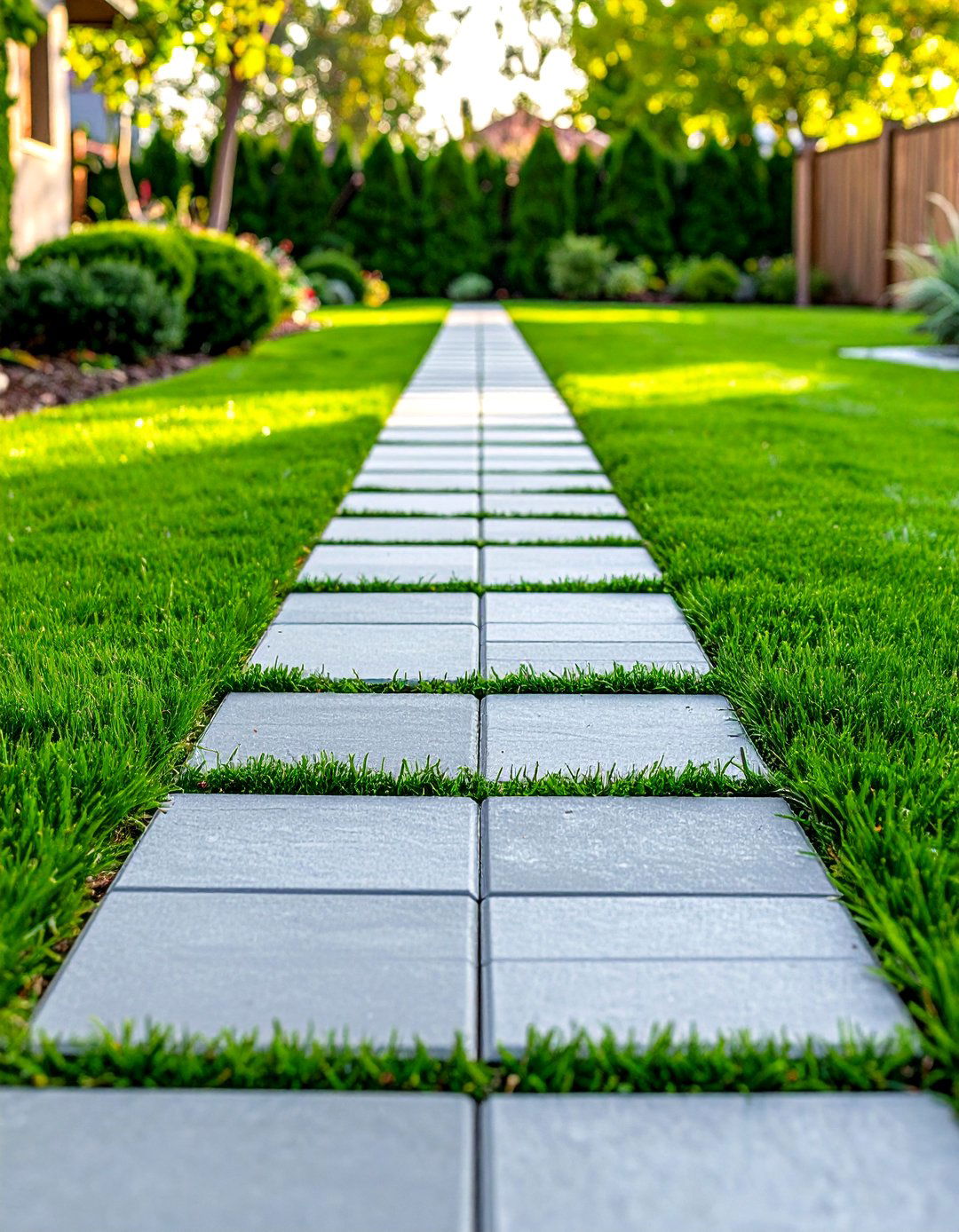
For a blend of greenery and hardscape, a grass-infused grey paver walkway intersperses pavers with strips of turf, creating a living pathway that feels integrated with the lawn. This approach uses concrete or stone pavers spaced typically four to six inches apart, allowing grass to grow between each unit. The result is a soft, visually striking corridor that shifts between solid path and verdant carpet. To build this style, excavate a stable base, lay each paver on bedding sand, and seed turf in the joints, then maintain by mowing at ground level. This design maximizes drainage, reduces heat retention, and fosters a seamless transition between hardscaping and green space.
5. Permeable Grey Paver Walkway
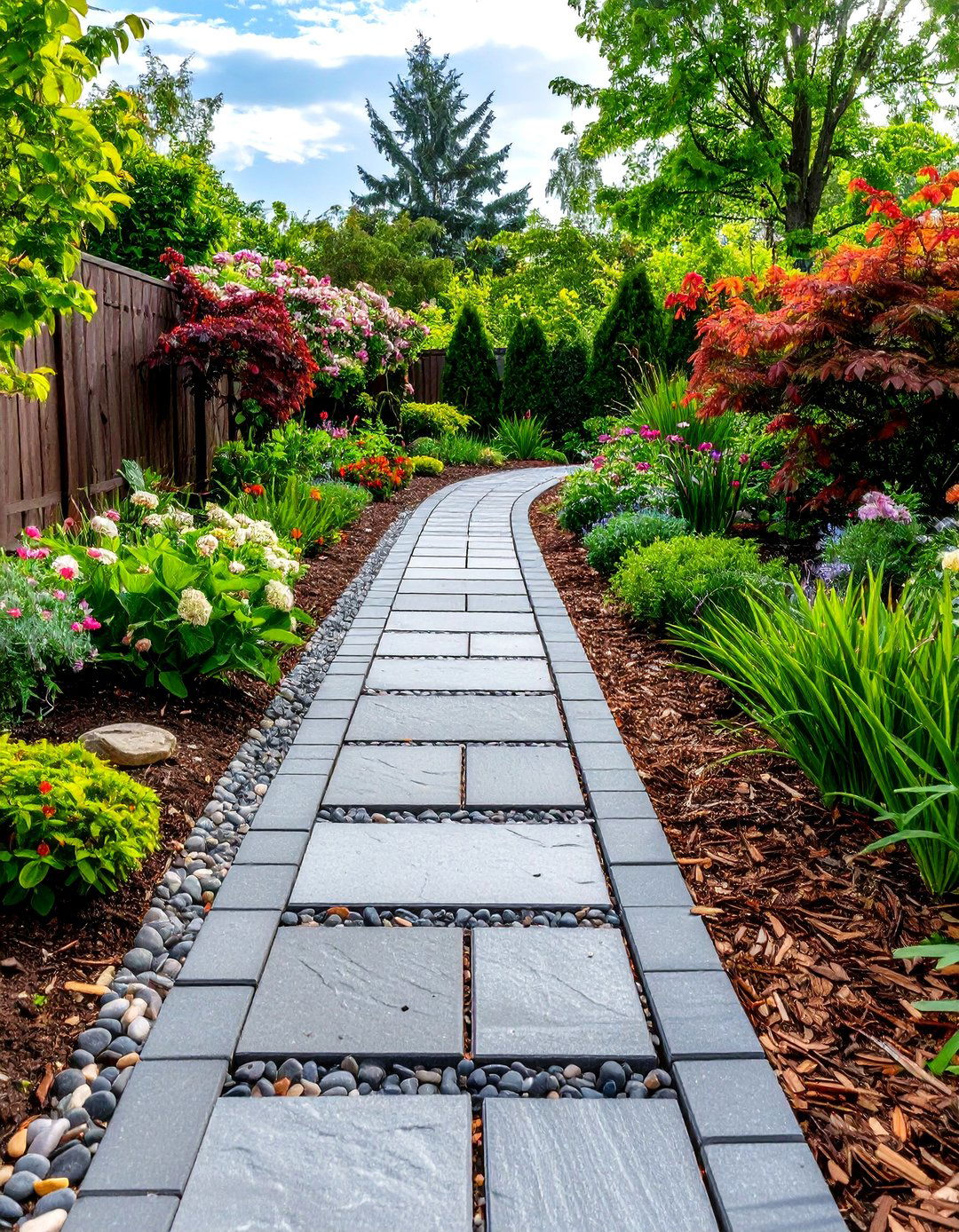
Unlike traditional impermeable surfaces, a permeable grey paver walkway allows rainwater to drain through gaps between pavers, reducing runoff and preventing puddles. By choosing interlocking concrete pavers set on a permeable base, you create a sustainable path that filters water back into the ground and alleviates stormwater pressure. The voids between units can be filled with gravel, mulch, or fine grass for added texture. Preparation involves compacting a crushed stone sub-base, adding a bedding layer, setting pavers with precise spacing, and then topping with joint material. This eco-friendly design promotes healthier soil, minimizes erosion, and complements modern landscaping with its clean grey aesthetic.
6. Contrasting Border Grey Paver Walkway
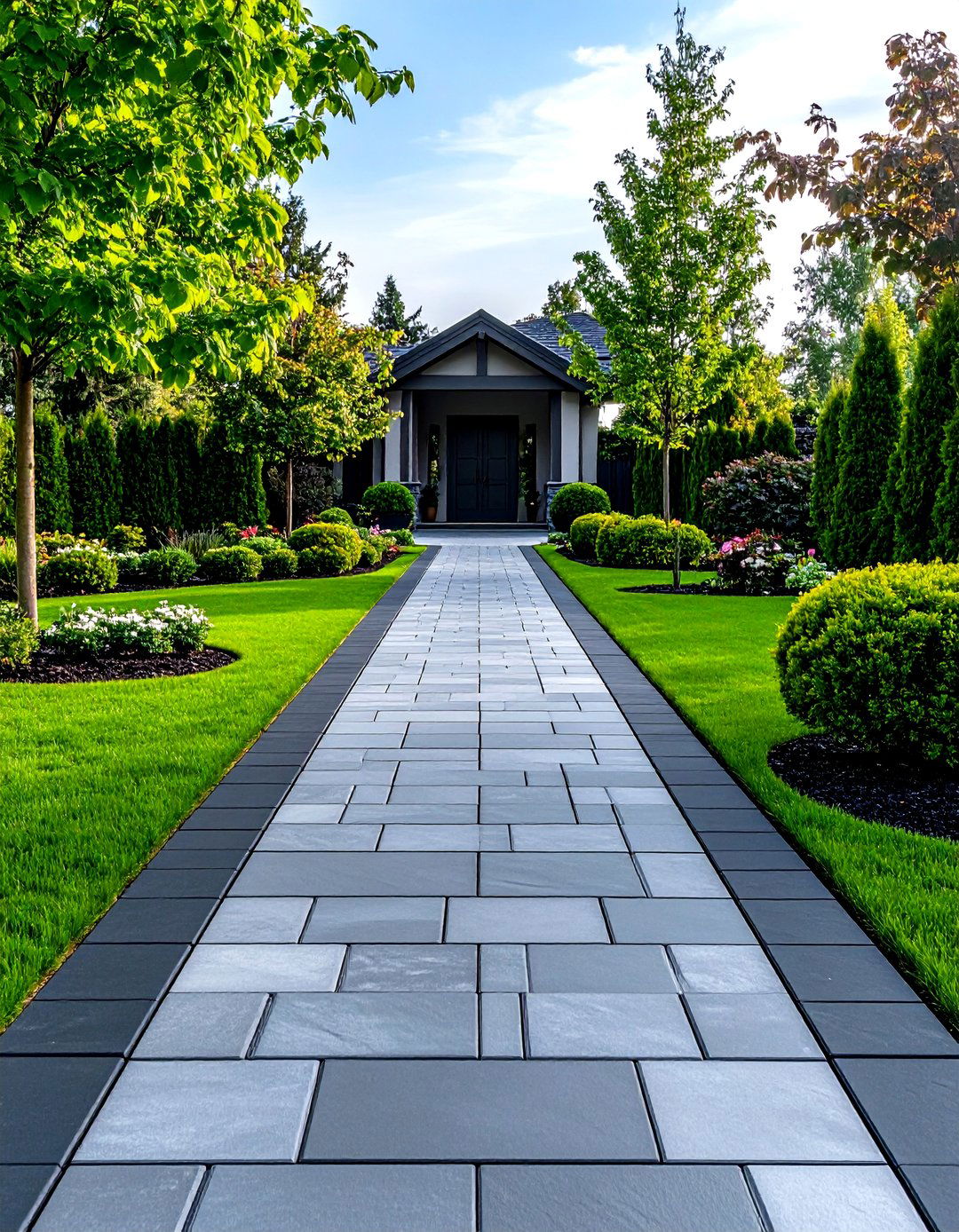
These grey paver walkways gain visual definition when framed by a narrow contrasting border, typically in a darker charcoal or black tone. The border uses linear pavers or cobblestone units laid parallel to the main path, neatly containing the field of grey slabs. This accentuating rim highlights the edges, drawing attention to the walkway’s path and preventing edge shifting. Installation requires precision cutting for corner joints and consistent joint spacing to ensure clarity between the field and border. Incorporating splayed corners or subtle curves further enhances the border’s impact. This technique suits formal front entrances, sideyard corridors, and garden paths, blending structured elegance with contemporary flair.
7. Curvilinear Grey Paver Walkway
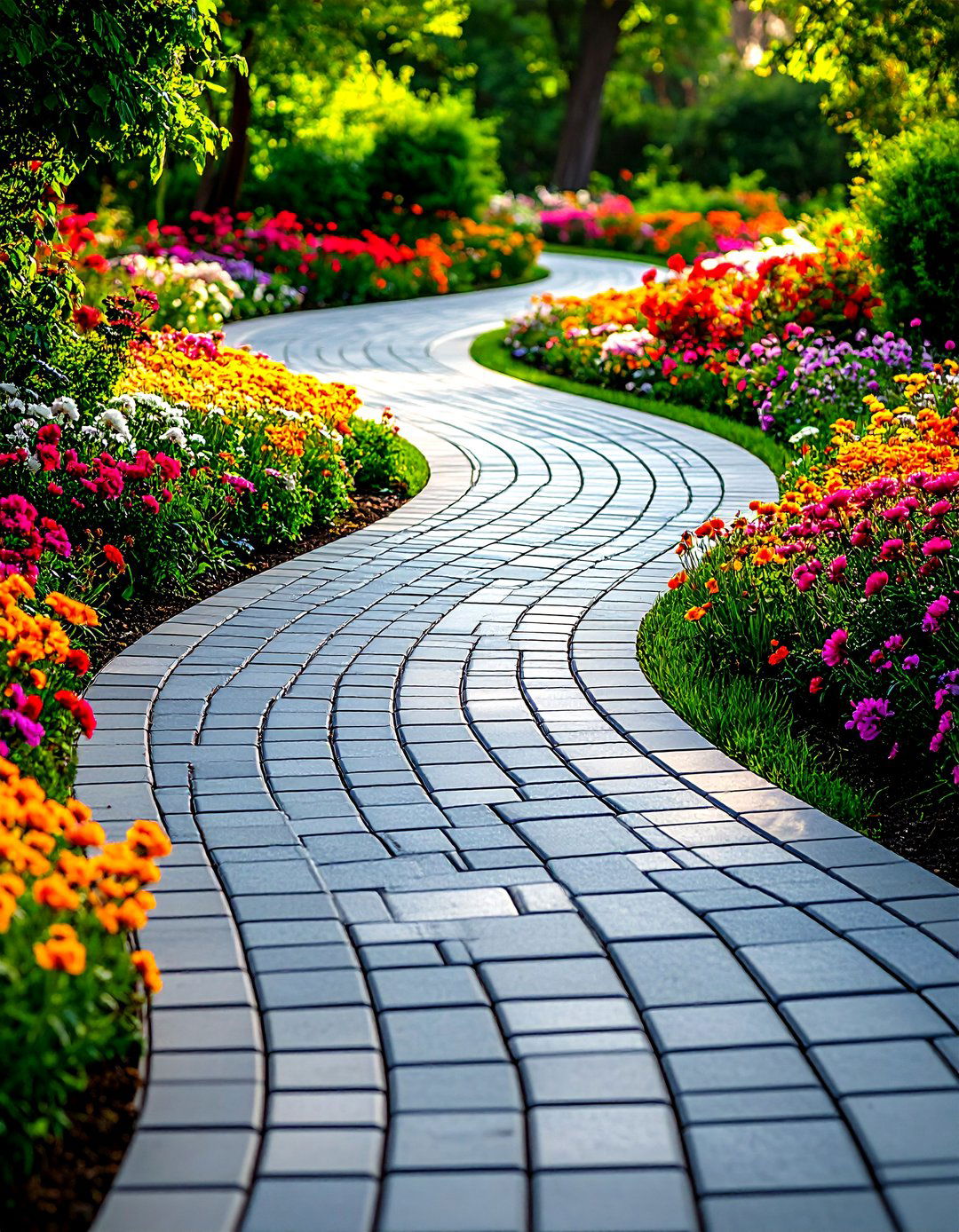
In garden settings where straight lines feel rigid, a curvilinear grey paver walkway introduces organic movement by gently sweeping through flowerbeds or lawn expanses. Concrete or stone pavers following a smooth S-curve evoke a naturalistic flow, encouraging leisurely strolls. To create this, lay the pavers on a compacted base, following a rope line for guidance, then adjust each unit to mirror the curve precisely. The path can widen or narrow at key points to create visual pauses or focal areas. Edging blocks in matching grey maintain a clean outline. This sinuous design blends seamlessly with lush planting and softens architectural backdrops.
8. Large Format Slab Grey Paver Walkway
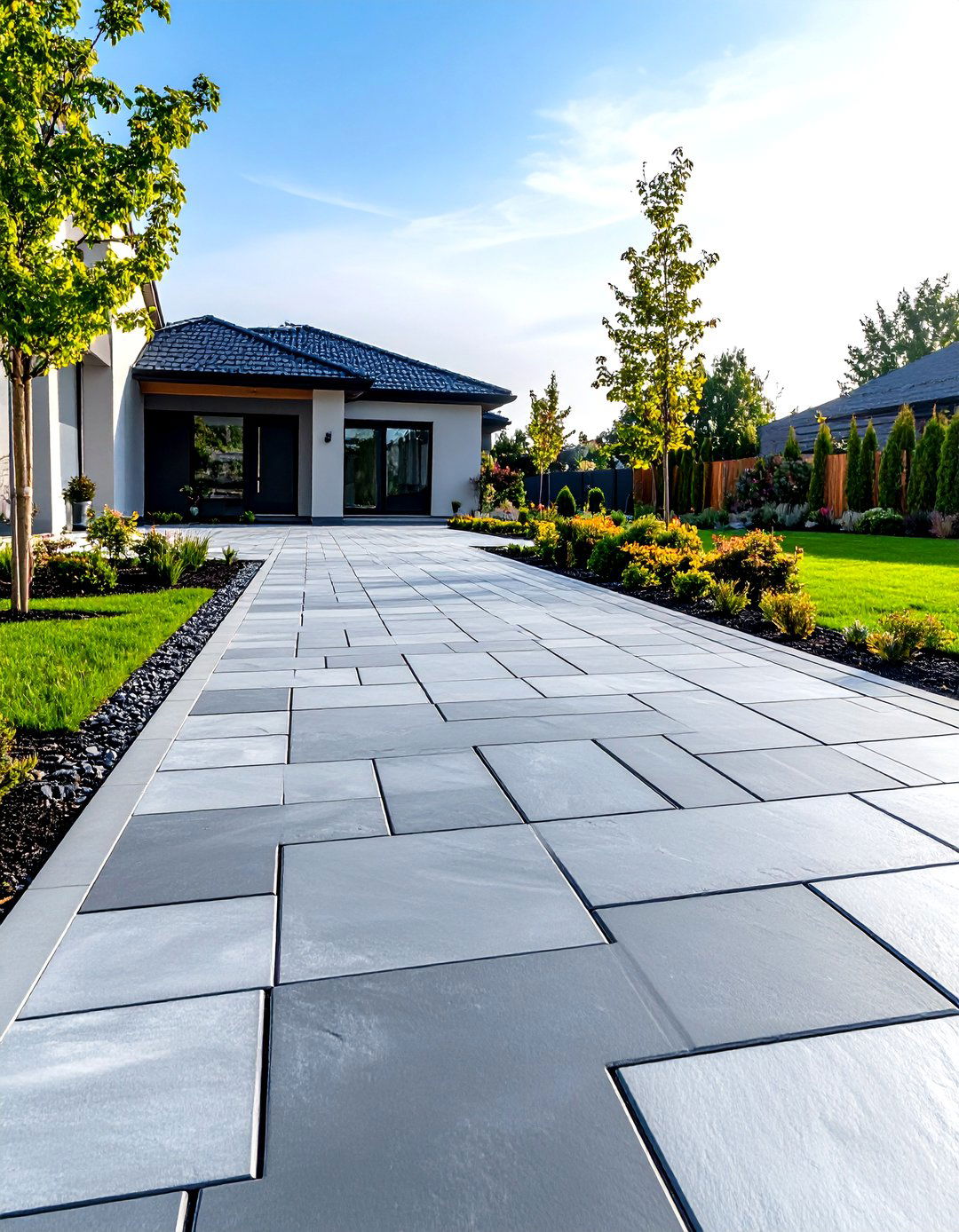
One striking grey paver walkway trend uses oversized slabs, often measuring 24×24 inches or larger, to create minimalist, uninterrupted floor planes. These large-format pavers provide a clean, contemporary canvas that minimizes joints and emphasizes spaciousness. Suitable for modern homes, this style relies on precision cutting, uniform grout lines, and a stable, level base to maintain alignment. The wide expanse of smooth grey surfaces contrasts beautifully with bordering plantings or gravel infill. Maintenance is simplified due to fewer grout lines, and the slab style supports wheelchair access easily. Pair this streamlined walkway with sculptural planters or minimalist lighting for a polished, architectural statement.
9. Geometric Pattern Grey Paver Walkway
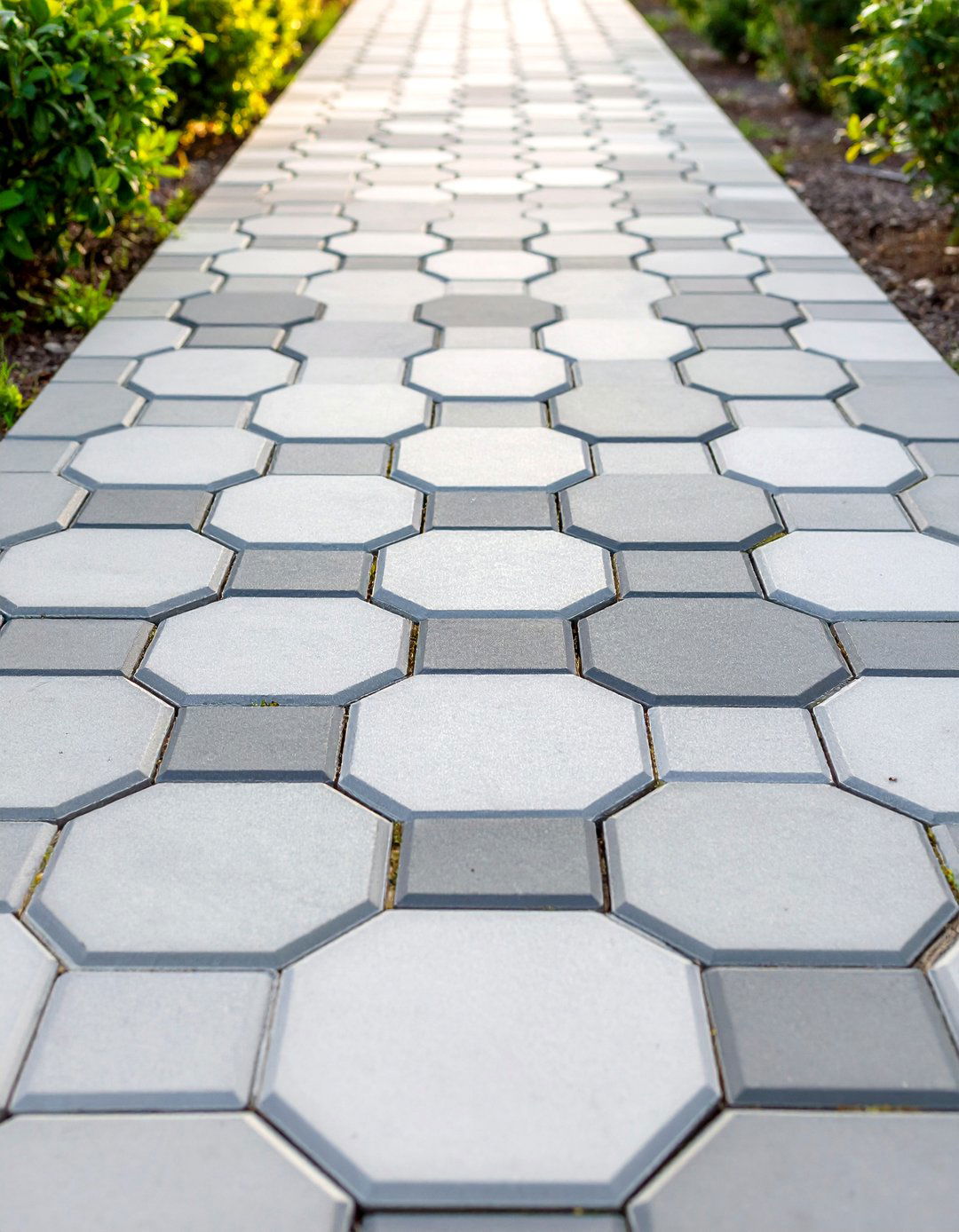
For a contemporary twist, geometric pattern grey paver walkways incorporate shapes such as hexagons, diamonds, and parallelograms to form eye-catching motifs. By selecting pre-cut interlocking paver lines in consistent grey tones, you achieve a graphic, modern look without extensive onsite cutting. These repeating tessellations shine in urban courtyard patios or entrance drives, blending architectural precision with playful geometry. Complement the bold layout with understated linear planting beds or minimalist lighting to avoid visual clutter. Consider alternating smooth and lightly textured pavers within the same shade range to add depth and invite closer inspection of each geometric form to withstand outdoor wear.
10. Textured Grey Paver Walkway Surface
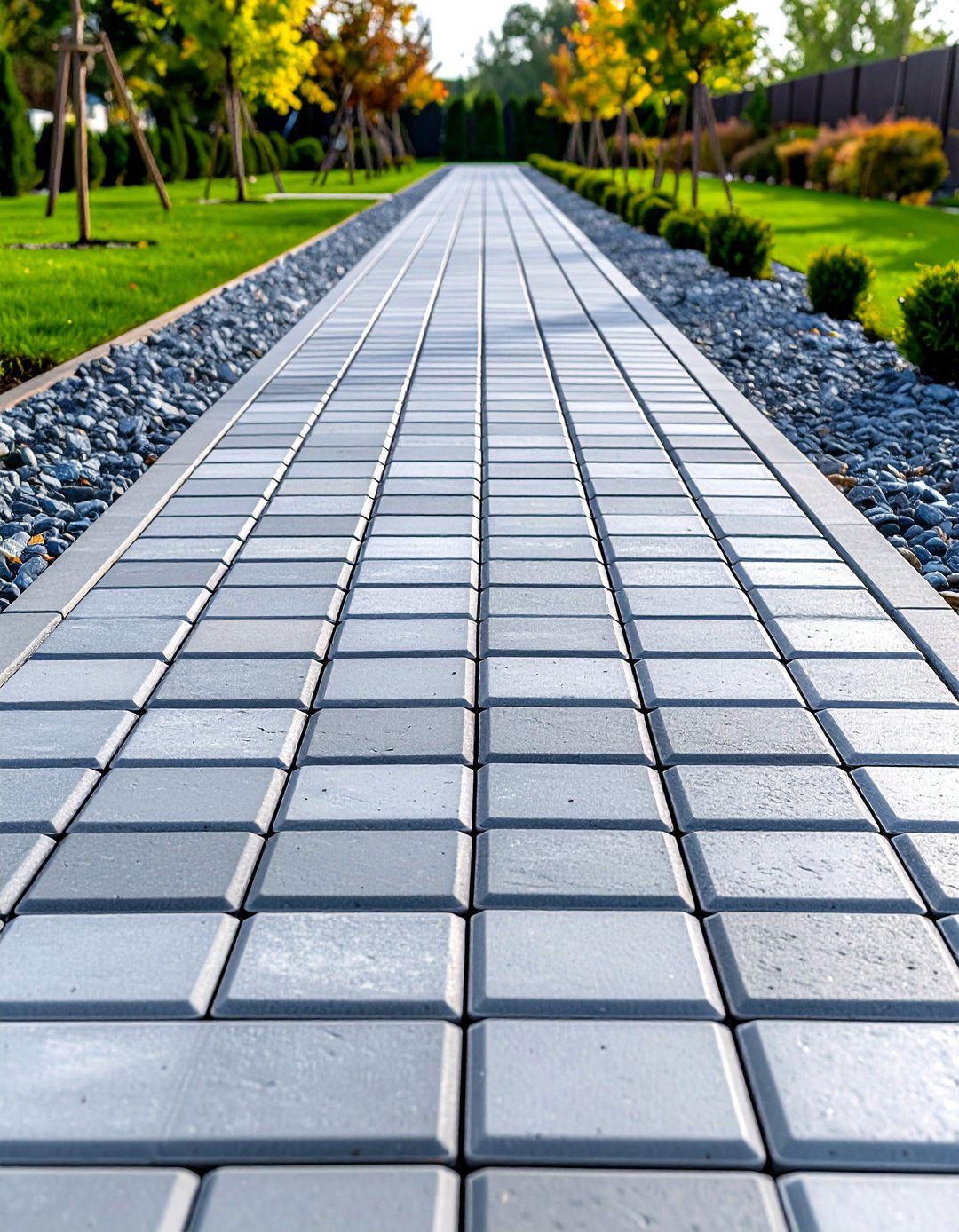
With subtle surface textures such as micro-pebbled finishes or sand-blasted faces, a grey paver walkway gains grip and visual interest while maintaining a sleek aesthetic. Pavers featuring a lightly rough surface resist slipping in wet conditions and add depth through varied reflections of light. To achieve this, select textured concrete or natural stone pavers with anti-slip treatments, lay them on a well-prepared base, and use a jointing material that complements the grey tonality. Textured surfaces pair exceptionally well with linear or repeating patterns, accentuating each paver’s individual character. This approach enhances safety and elevates the walkway into a tactile design element that invites touch and exploration.
11. Mixed Material Infill Grey Paver Walkway
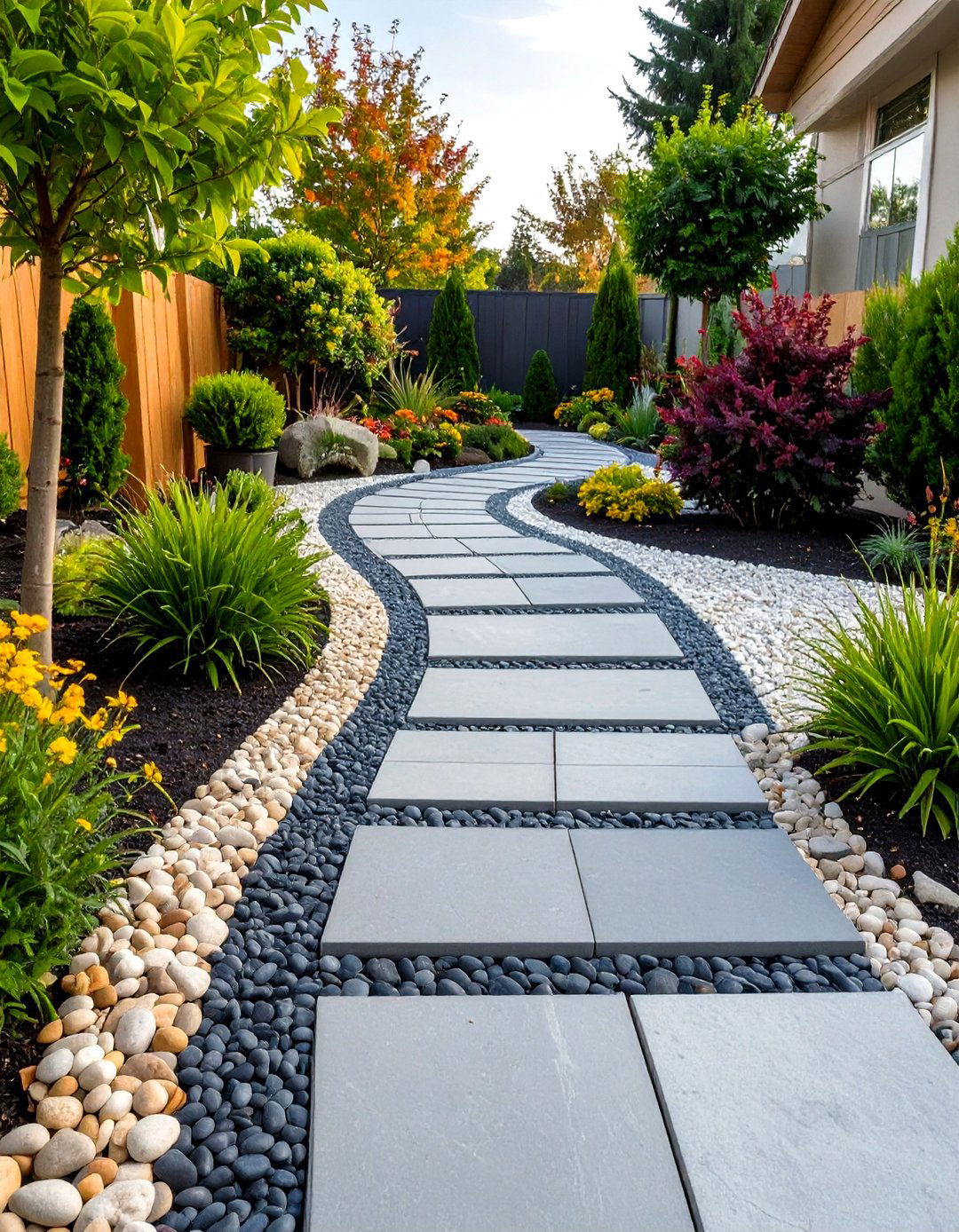
Moreover, combining grey pavers with decorative stone or gravel infill can create a dynamic, textured walkway that balances hardscape solidity with organic accents. By setting grey concrete pavers slightly apart and filling the joints with pea gravel, crushed rock, or decorative pebbles, you achieve a mosaic-like path that both drains well and offers tactile variation. The contrast between smooth paver faces and angular gravel enhances visual intrigue. Installation requires laying pavers on a leveled sand base, then pouring and sweeping the infill material into each gap until full. This hybrid walkway style marries functionality with artistry, seamlessly integrating path and garden elements.
12. Cobblestone-Inspired Grey Paver Walkway
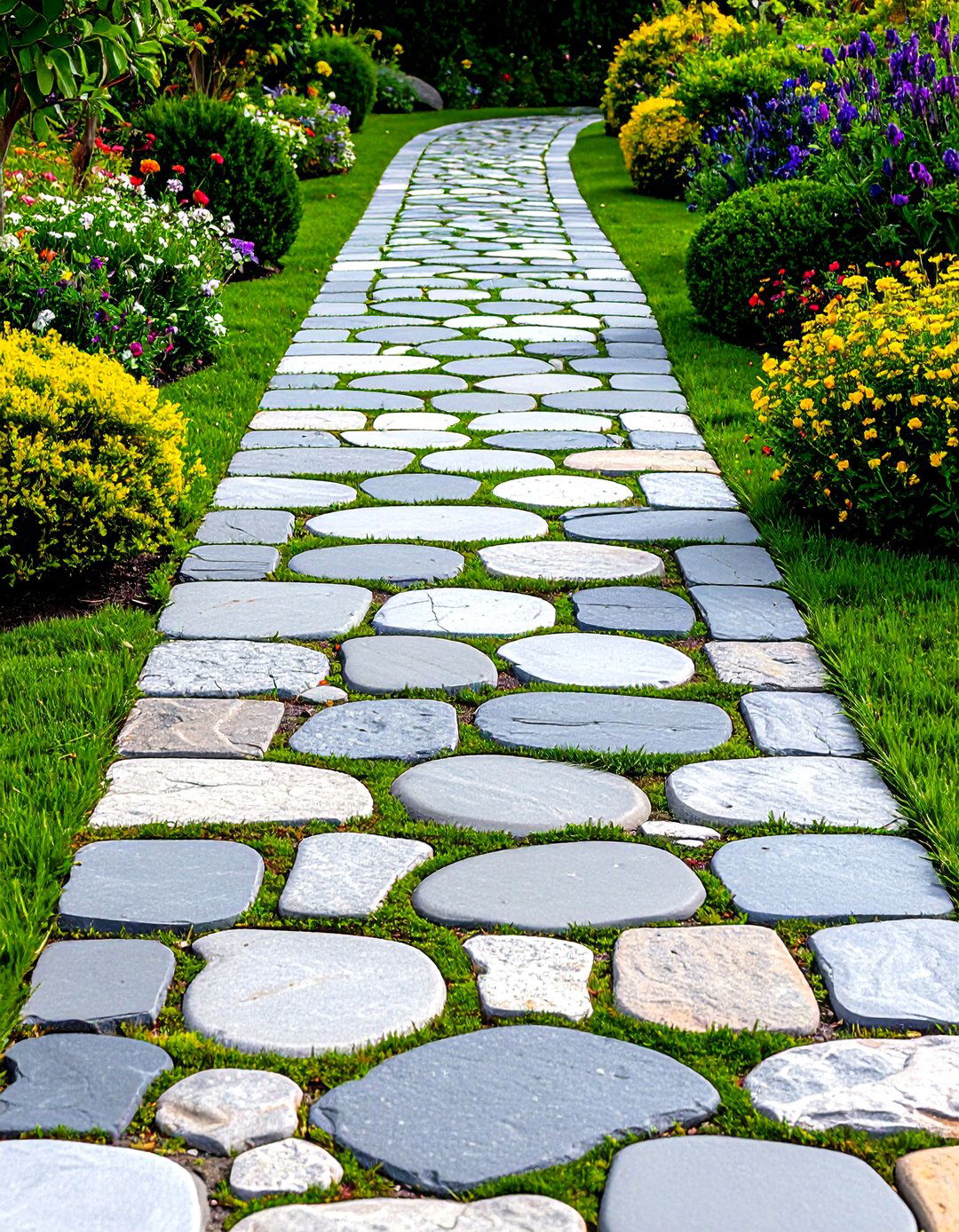
Although true cobblestones have irregular shapes, cobblestone-inspired grey paver walkways replicate that rustic charm using uniform concrete or stone units textured to resemble antique stones. These pavers often feature rounded edges and a subtly varied surface finish to mimic weathered character while providing consistent installation performance. Install them in random or semi-curved patterns to evoke historic European lanes, and use jointing compounds in muted grey to blend seams. This aesthetic pairs beautifully with climbing vines, gravel borders, and traditional lantern-style path lighting. The result is a durable, nostalgic walkway that honors classic craftsmanship while benefiting from modern paver technology.
13. Integrated Planter Grey Paver Walkway
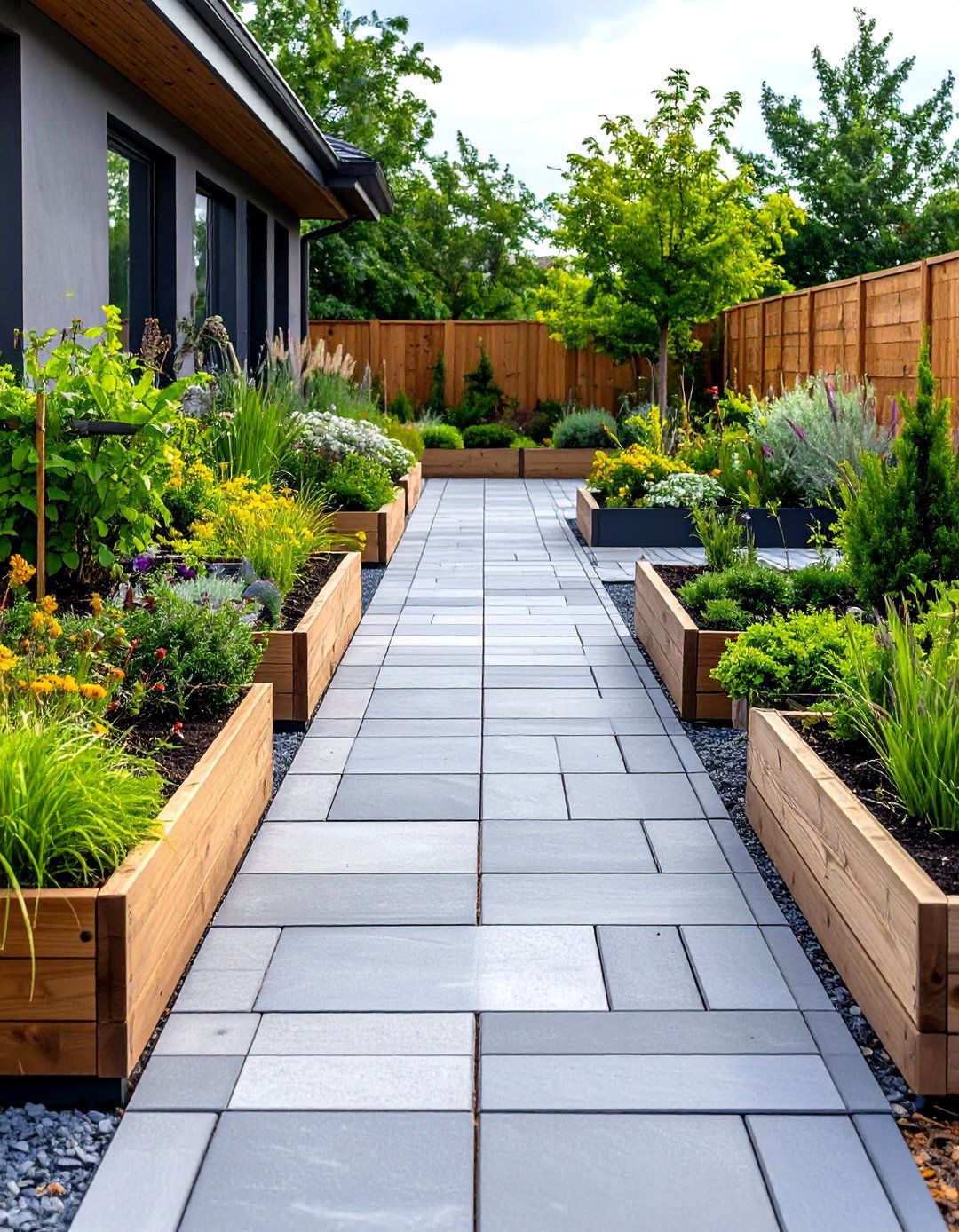
For a seamless transition between walkway and greenery, integrate planter boxes directly into a grey paver walkway. Modular concrete pavers placed around built-in raised beds create geometric planters along the path, ideal for low shrubs, grasses, or seasonal flowers. The planters serve as natural guides and break up long stretches, adding scale and color. To craft this, install pavers on a solid base while framing recessed planter cavities, then reinforce with edging stones. Soil-filled inserts can be swapped seasonally, keeping the walkway fresh and vibrant year-round. This design merges hardscape function with softscape beauty, turning a simple path into a living corridor.
14. Hexagonal Slab Grey Paver Walkway
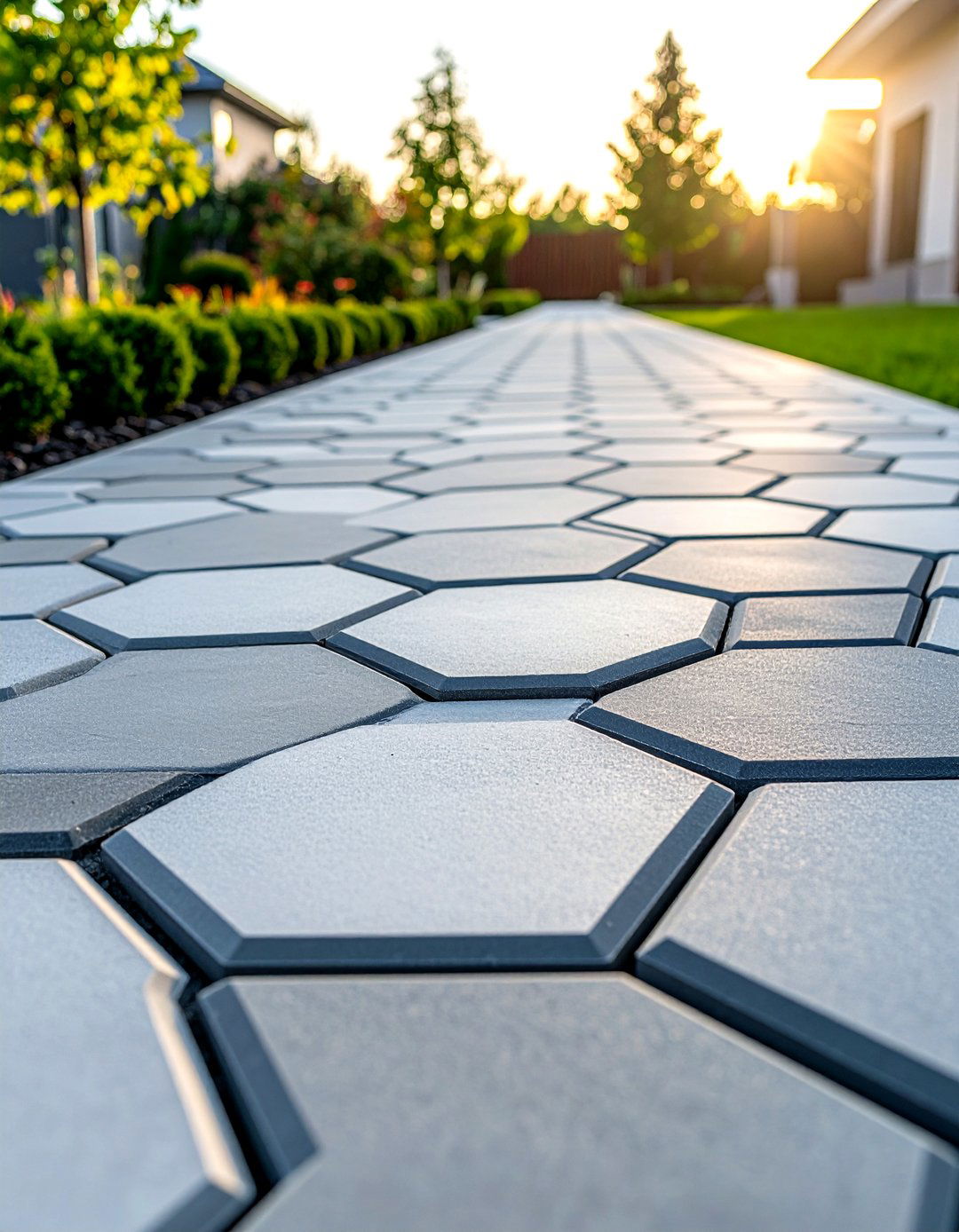
Take a hexagonal slab approach to your grey paver walkway for a distinctive, honeycomb-inspired surface. Six-sided slab pavers, arranged in seamless clusters, impart architectural intrigue and soften harsh linear layouts. These oversized hexagon units typically measure 18 to 24 inches across, reducing joint density and creating a bolder visual rhythm. Installation demands careful alignment: lay on a level base, then lightly tap each hexagon to ensure uniform joint spacing. The continuous grey medium ties the units together, but you can introduce subtle color variations—slate grey, charcoal, or pewter—to emphasize the honeycomb pattern. This style elevates conventional paths into modern sculptural statements.
15. Stepping Stone and Grey Paver Combo Walkway
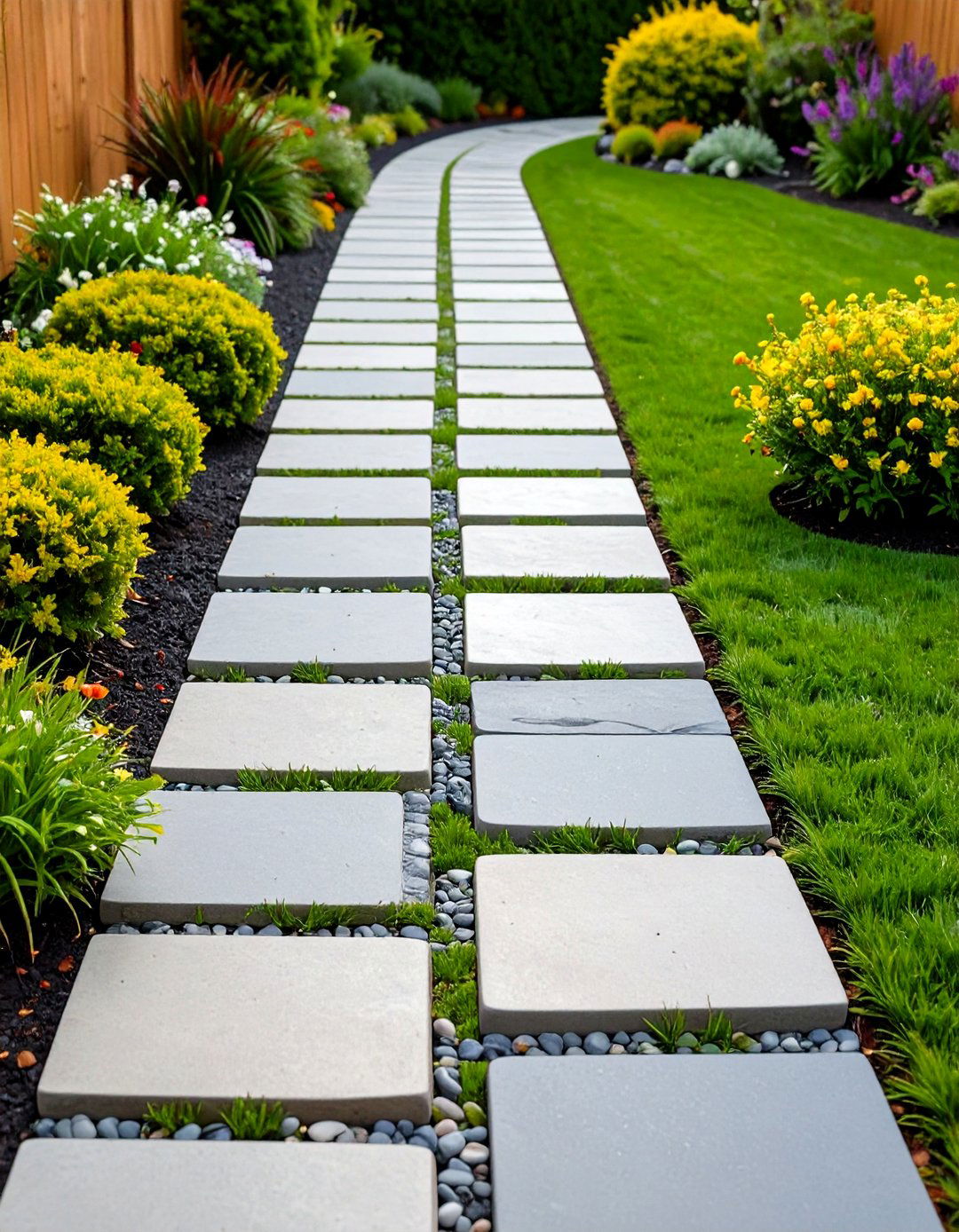
By alternating large grey pavers with adjacent stepping stones, you can create a playful, functional path that guides exploration through your garden. Set each paver as an anchor point, then position decorative stone or concrete stepping slabs offset to one side, forming a rhythmic sequence. The contrast between the smooth grey paver and textured stepping stones adds dimension and encourages slow, mindful walking. To install, prepare a consistent base, set each element to the same level, and fill gaps with low-profile gravel. This hybrid layout combines stability with whimsy, making it ideal for informal side yards, perennial borders, or pathways leading to focal garden features.
16. Integrated LED Lighting Grey Paver Walkway
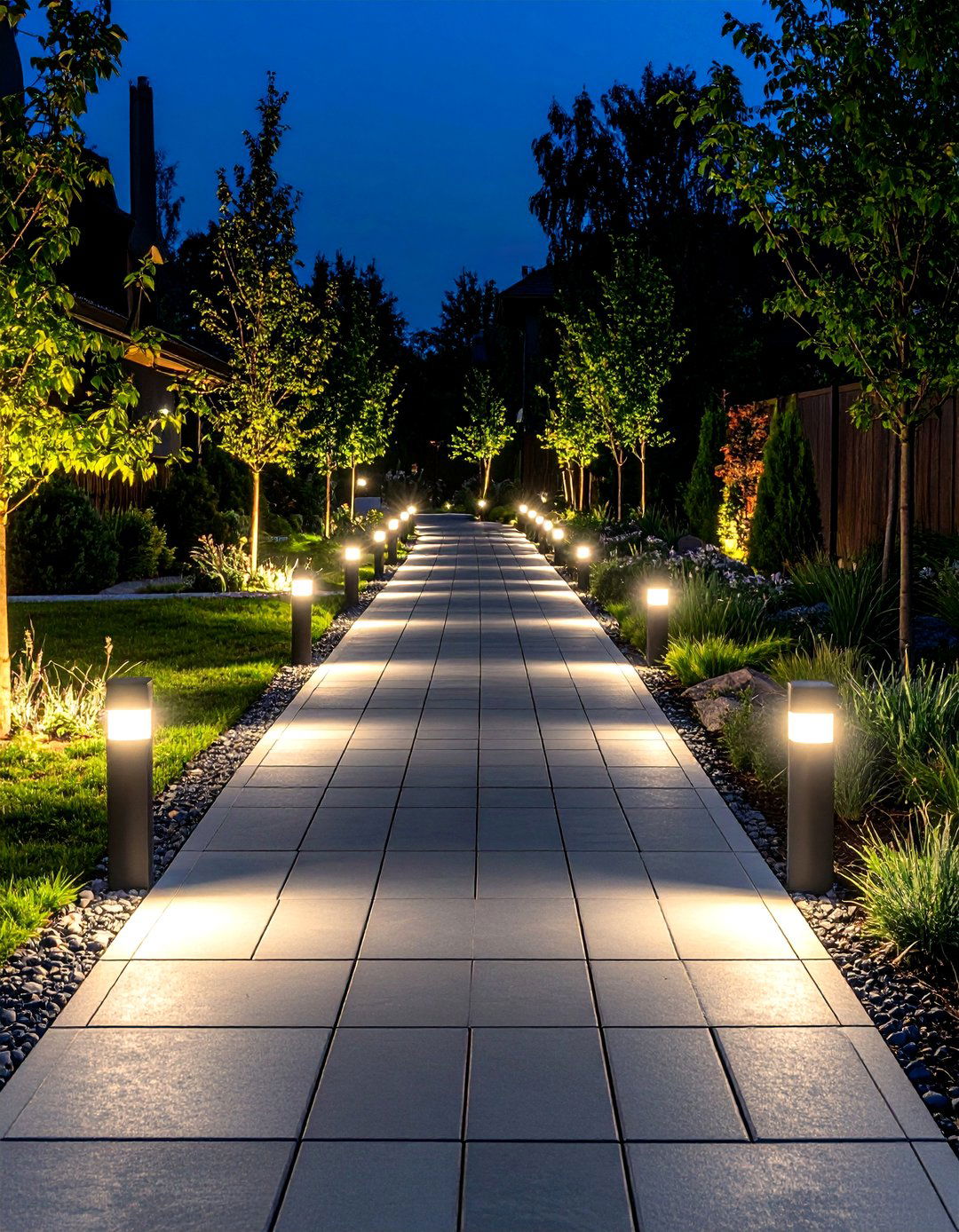
Surprisingly, integrating low-voltage LED paver lights directly into a grey paver walkway transforms nighttime navigation while accentuating the path’s contours. Thin, edge-mounted fixtures in modern gray powder-coated finishes sit flush between pavers and emit soft illumination along borders or center joints. These integrated lights operate on energy-efficient circuits, require minimal trenching, and withstand foot traffic and light vehicles. To install, plan LED layouts before paver placement, cut precise recesses, secure fixtures, and connect wiring to a timed or photoelectric transformer. The resulting lit pathway enhances safety, extends outdoor usability after dark, and showcases the textural elegance of grey pavers in a subtle ambient glow.
17. Understated Minimalist Grey Paver Walkway
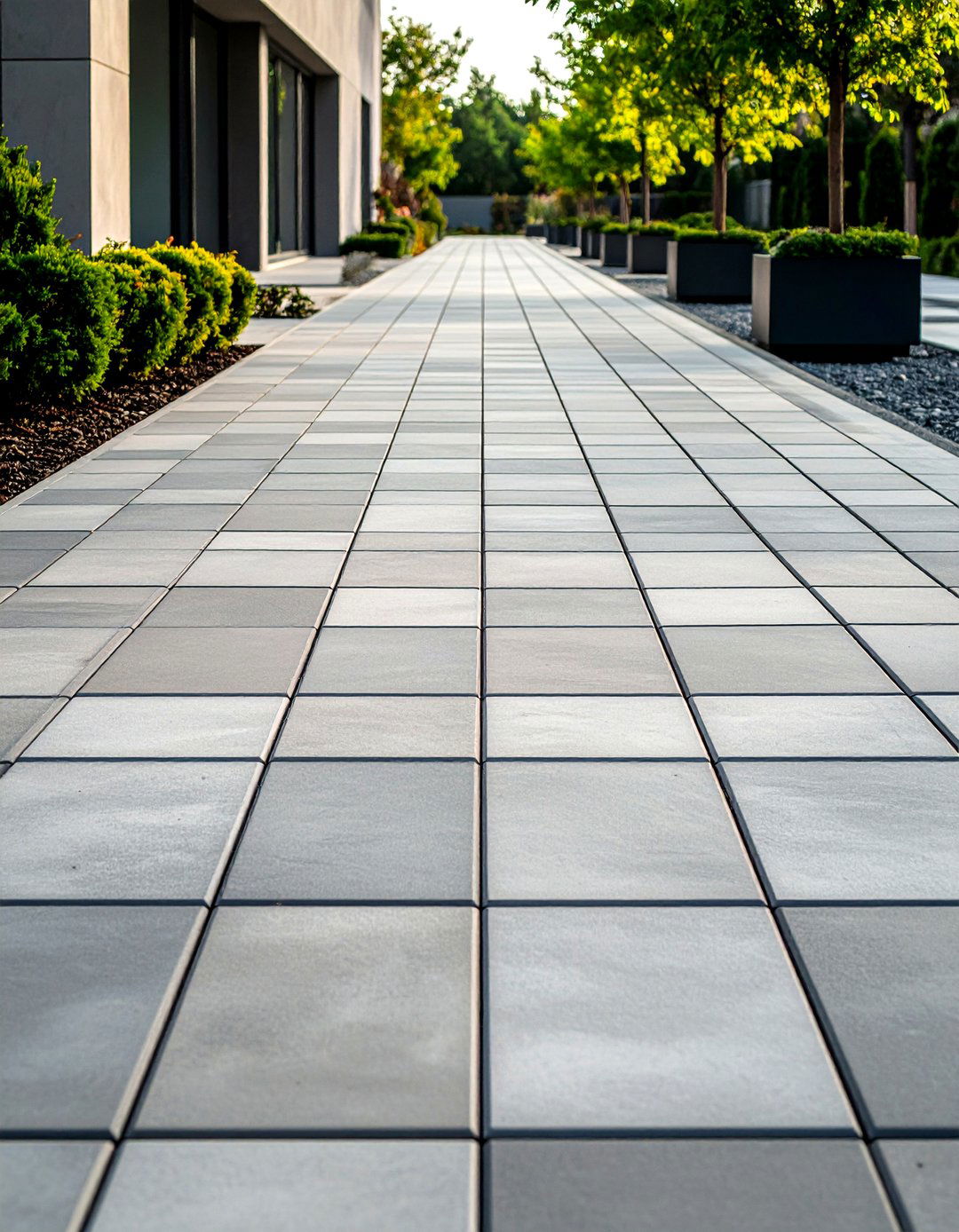
An understated minimalist grey paver walkway simplifies outdoor design with wide, smooth slabs laid in a clean, linear arrangement. By choosing a single shade of light grey for expansive rectangular pavers, the path blends seamlessly with surrounding architecture and vegetation. Installation prioritizes uniform joint widths—often between a quarter and half an inch—and a level, compacted base for flawless alignment. This minimalist approach shifts focus to material quality and scale rather than complex patterns. Pair with low-profile edging and discreet ground lighting to preserve the path’s serene aesthetic. Ideal for modern front entrances or courtyard connectors, this style underscores elegance through simplicity.
18. Circular Grey Paver Walkway
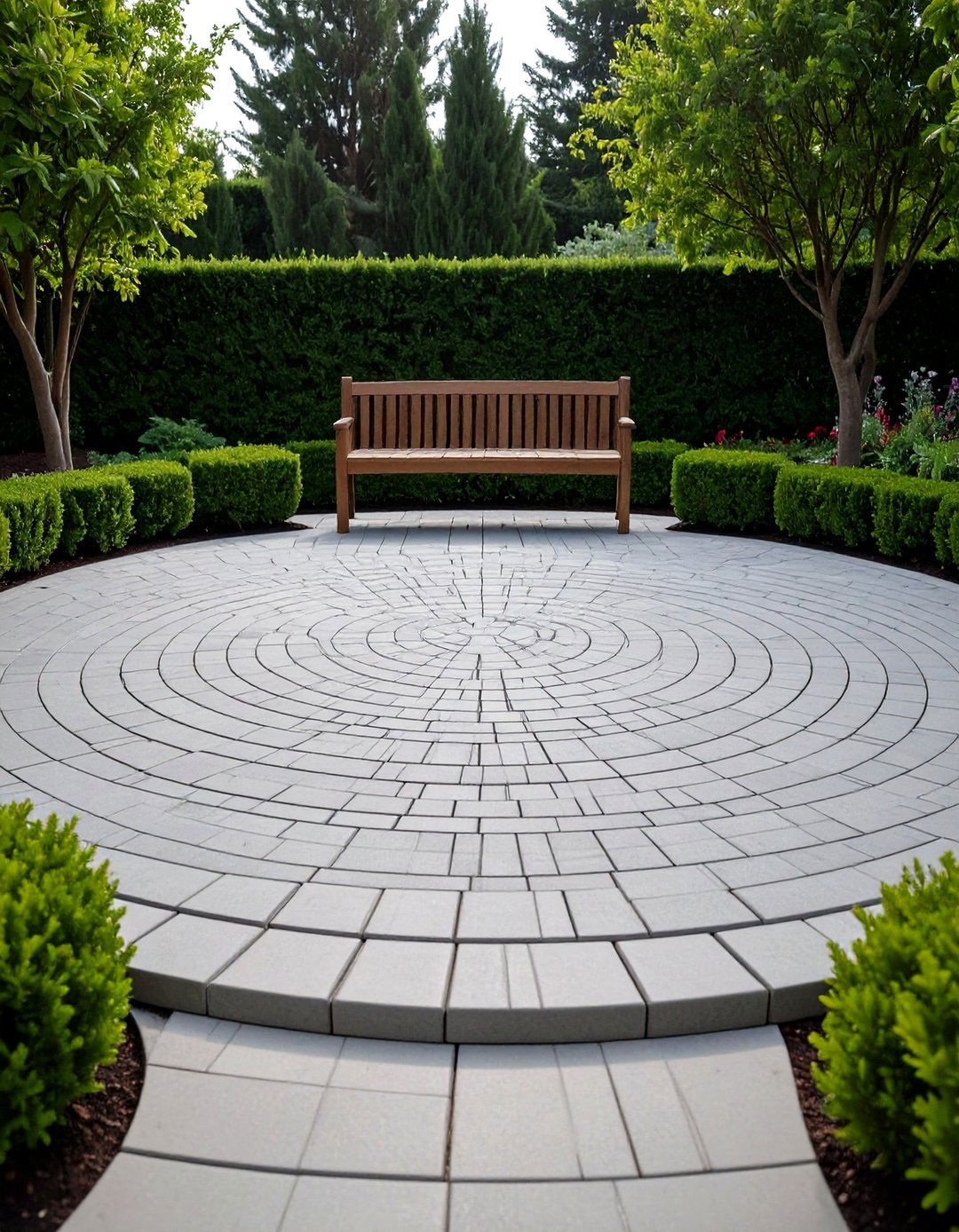
One way to elevate a grey paver walkway is by designing circular or spiral patterns that create focal gathering points in gardens or courtyards. Concentric rings of small-to-medium-sized pavers ripple outward from a central medallion, such as a contrasting dark grey or natural stone circle. This radial layout guides movement and adds a sculptural quality to the landscape. Installation requires precise layout drawings, careful paver selection for consistent units, and meticulous joint alignment radiating from the center. The circular form softens rectilinear architecture and invites visitors to pause at the core. Surrounding plantings or LED uplights can further accentuate the pathway’s gentle curves.
19. Natural Stone Accent Grey Paver Walkway
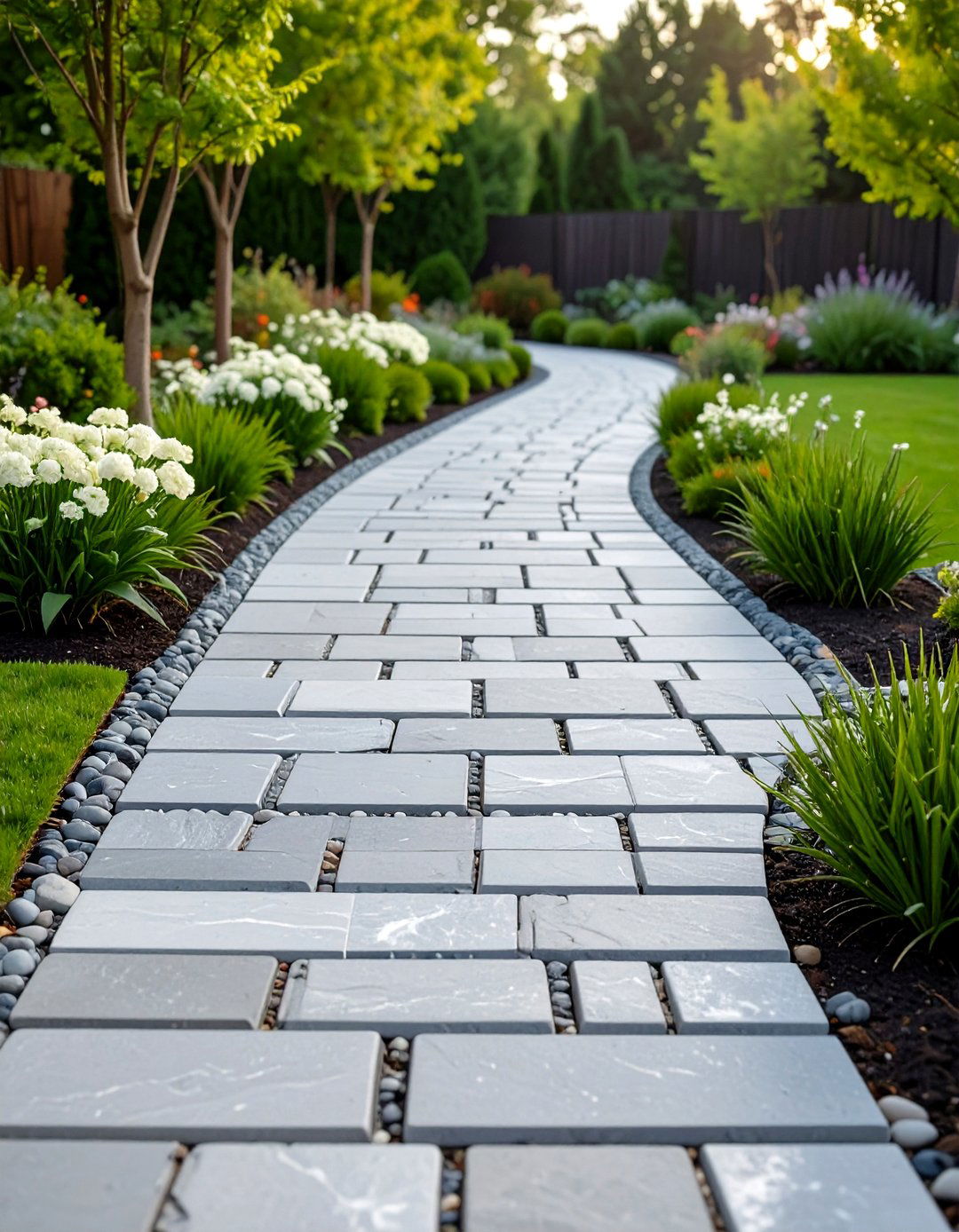
Despite relying on grey pavers as the primary material, you can introduce natural stone accents—such as silver quartzite or basalt flagstones—to punctuate the walkway and break monotony. Strategically place larger stones at transition points, seating areas, or path splits, embedding them flush with the pavers. The mixed use of precision-cut pavers and irregular flagstone adds artisanal charm while maintaining a cohesive grey palette. Preparation includes carefully measuring each stone’s footprint, trimming pavers for tight joints, and leveling all surfaces to prevent trip hazards. This blend of uniformity and natural variety produces a walkway that feels handcrafted, organic, and well integrated with surrounding greenery.
20. Multi-Toned Grey Paver Walkway
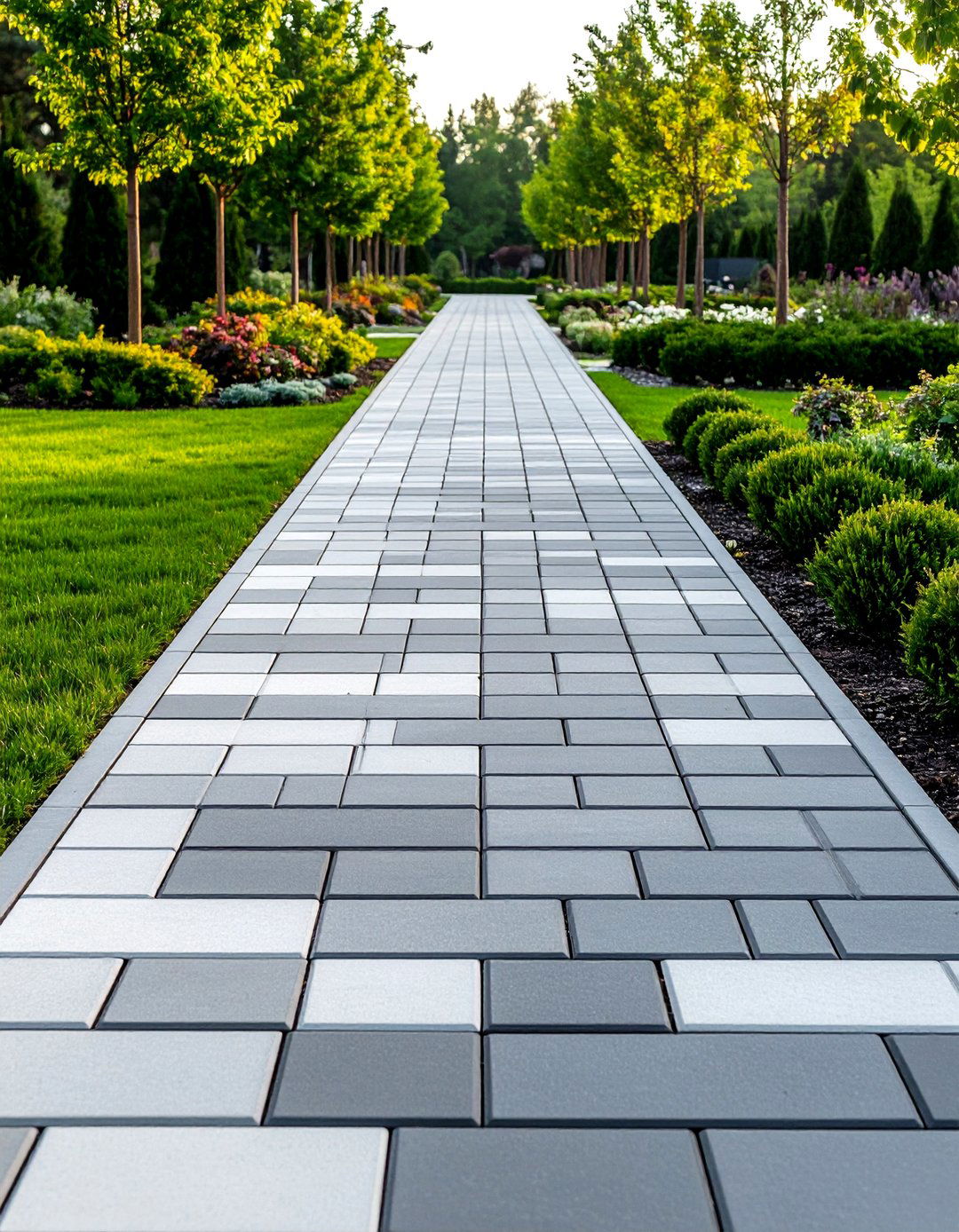
Another way to enliven a grey paver walkway is by blending multiple shades of grey—ranging from light dove to deep charcoal—to craft subtle gradients or shadow effects. Arrange lighter pavers at wider sections or entry points, transitioning to darker tones in narrower corridors or along borders. This tonal shift accentuates changes in path width, direction, or elevation without disrupting the cohesive palette. When installing, mix paver stocks in batches to distribute each shade evenly, avoiding visible color banding. The resulting play of light and dark layers adds sophistication and visual depth, making a simple walkway appear rich, dynamic, and bespoke.
Conclusion:
Exploring these grey paver walkway ideas reveals the versatility of concrete and stone in modern landscaping, from timeless herringbone and running bond patterns to innovative geometric and organic layouts. Sustainable options like permeable and grass-infused pathways support eco-friendly drainage and soften hardscapes. Paired with functional features such as integrated LED lighting, contrasting borders, and multi-tonal gradients, grey pavers serve as a neutral canvas for personalized path designs that balance visual appeal with performance. Your chosen combination of pattern, texture, and accent elements will ensure a bespoke walkway that elevates both form and function.


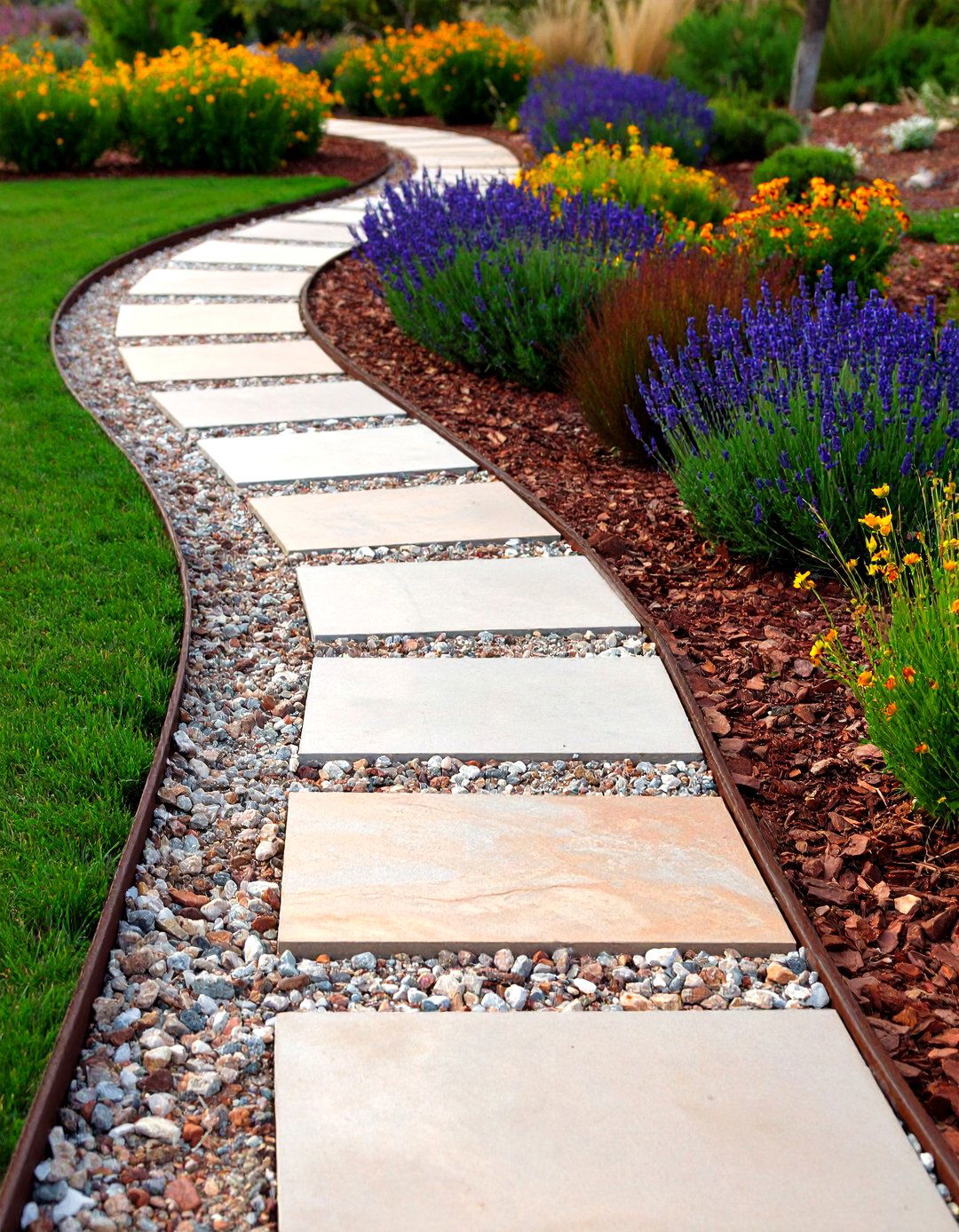


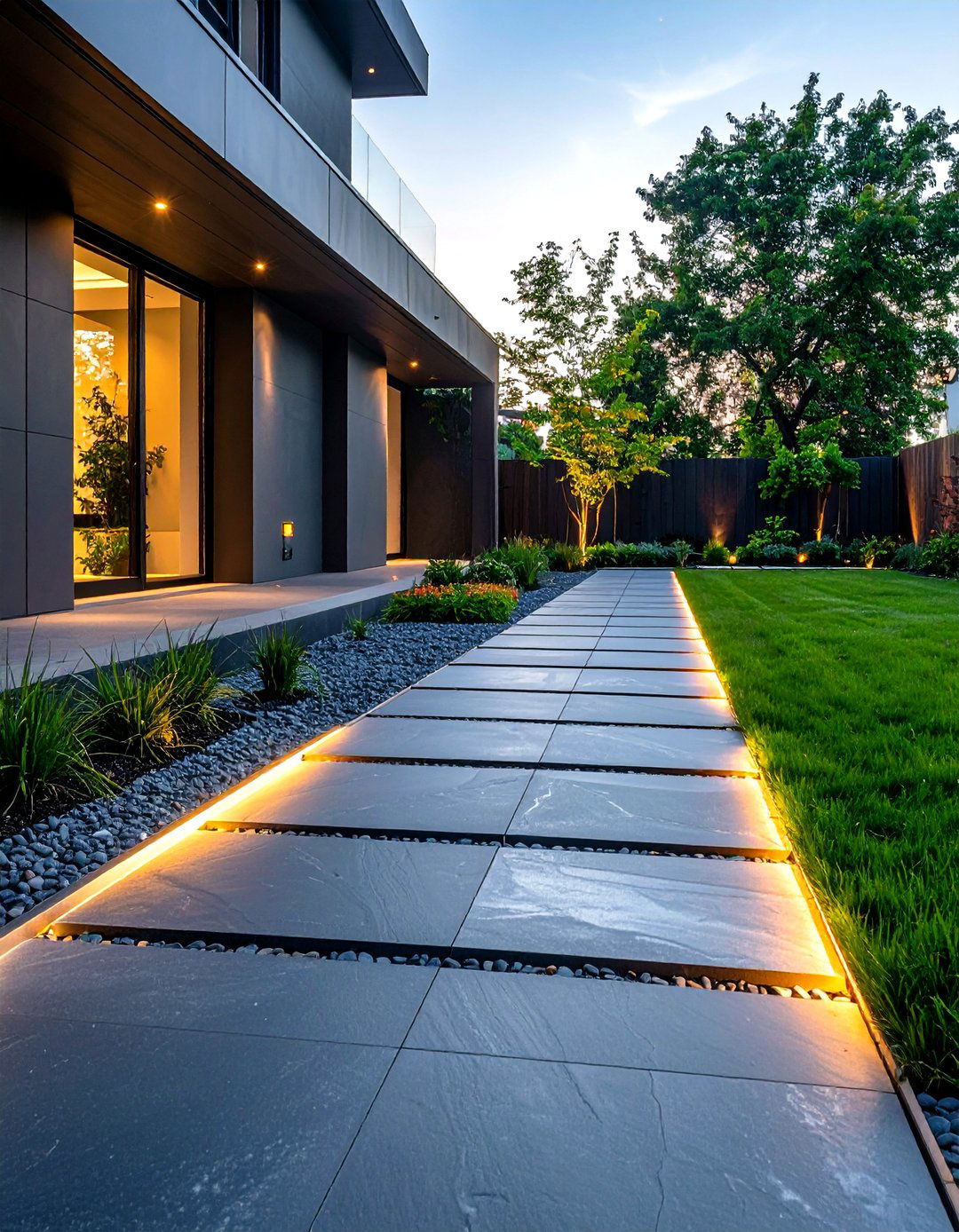
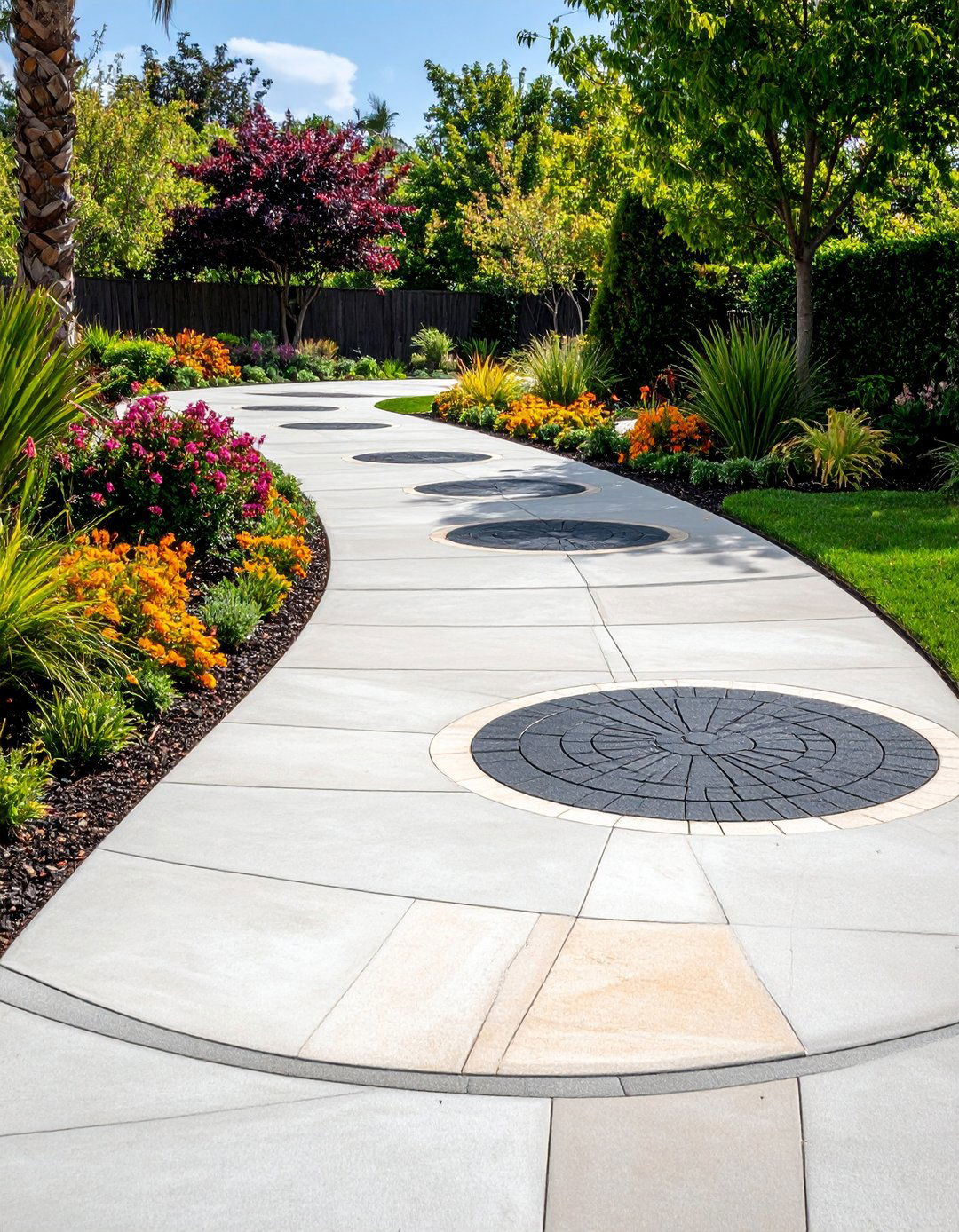
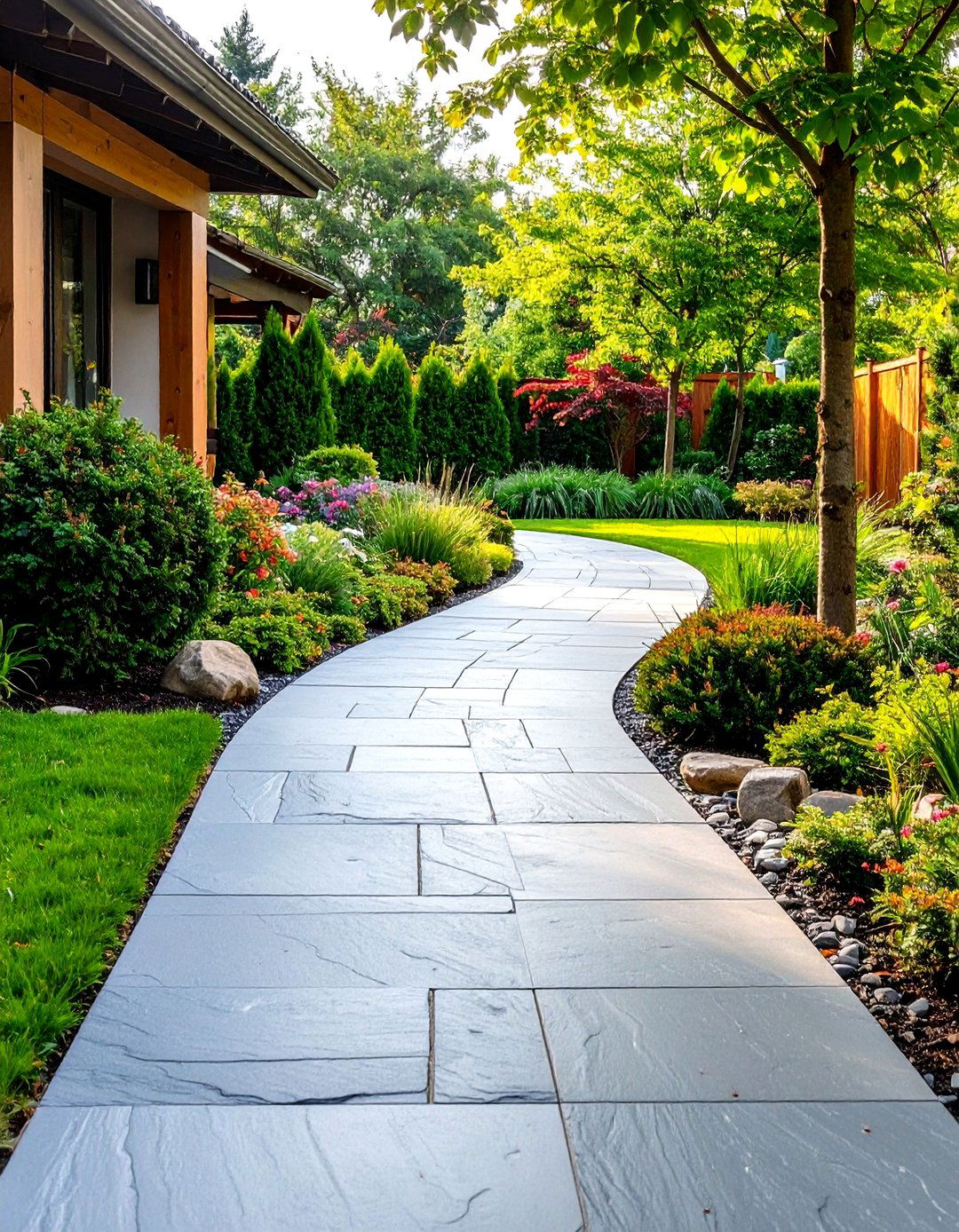
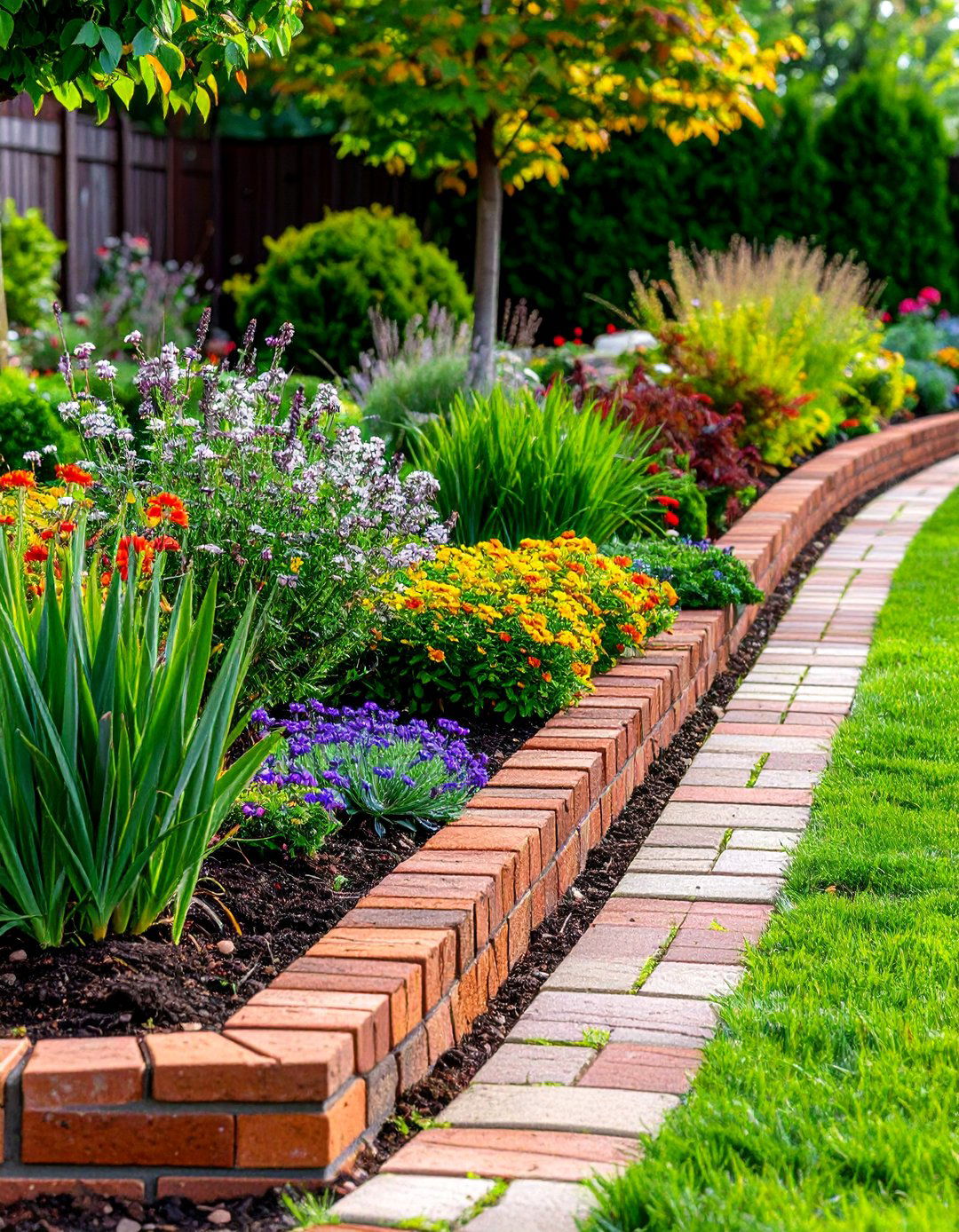
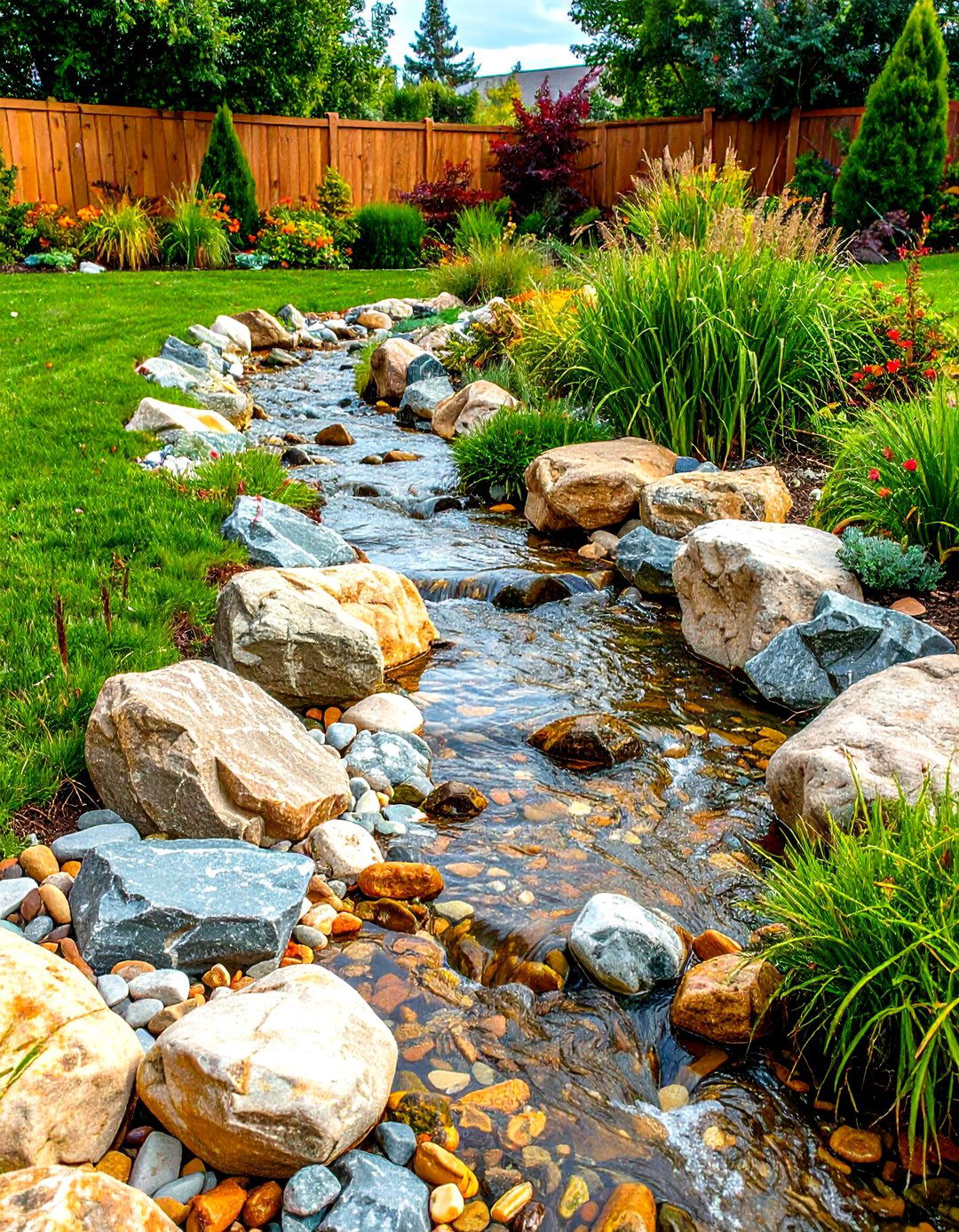

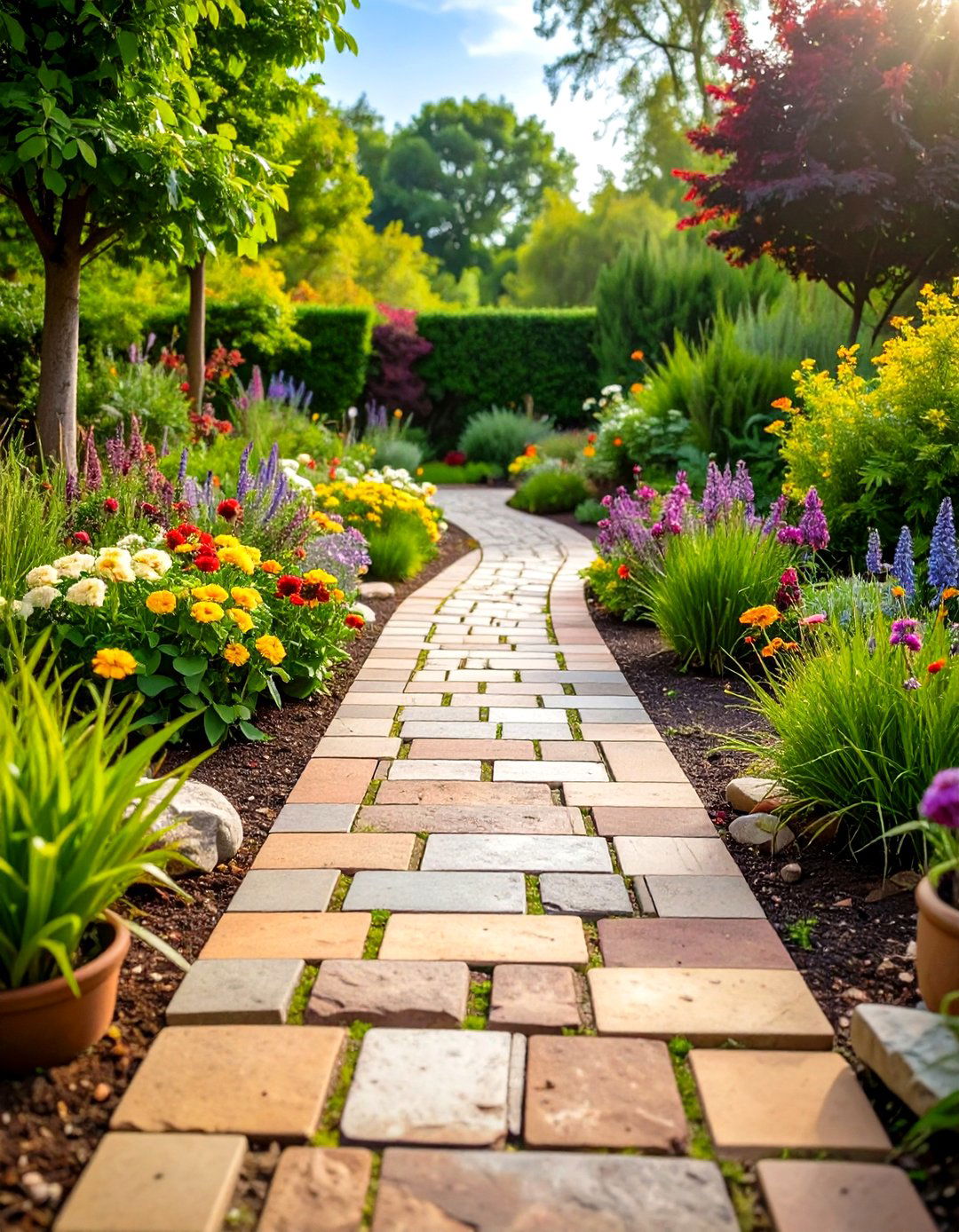
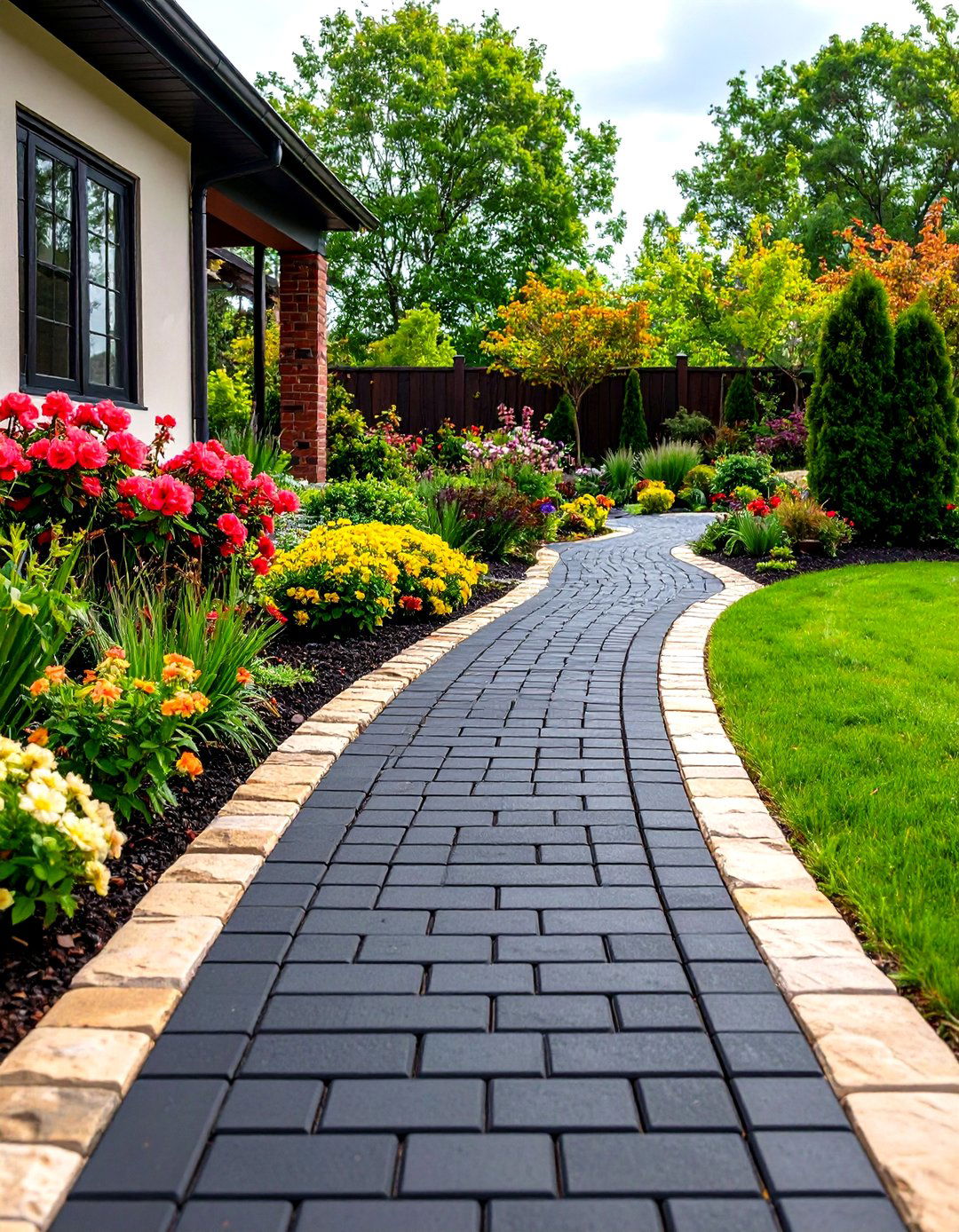
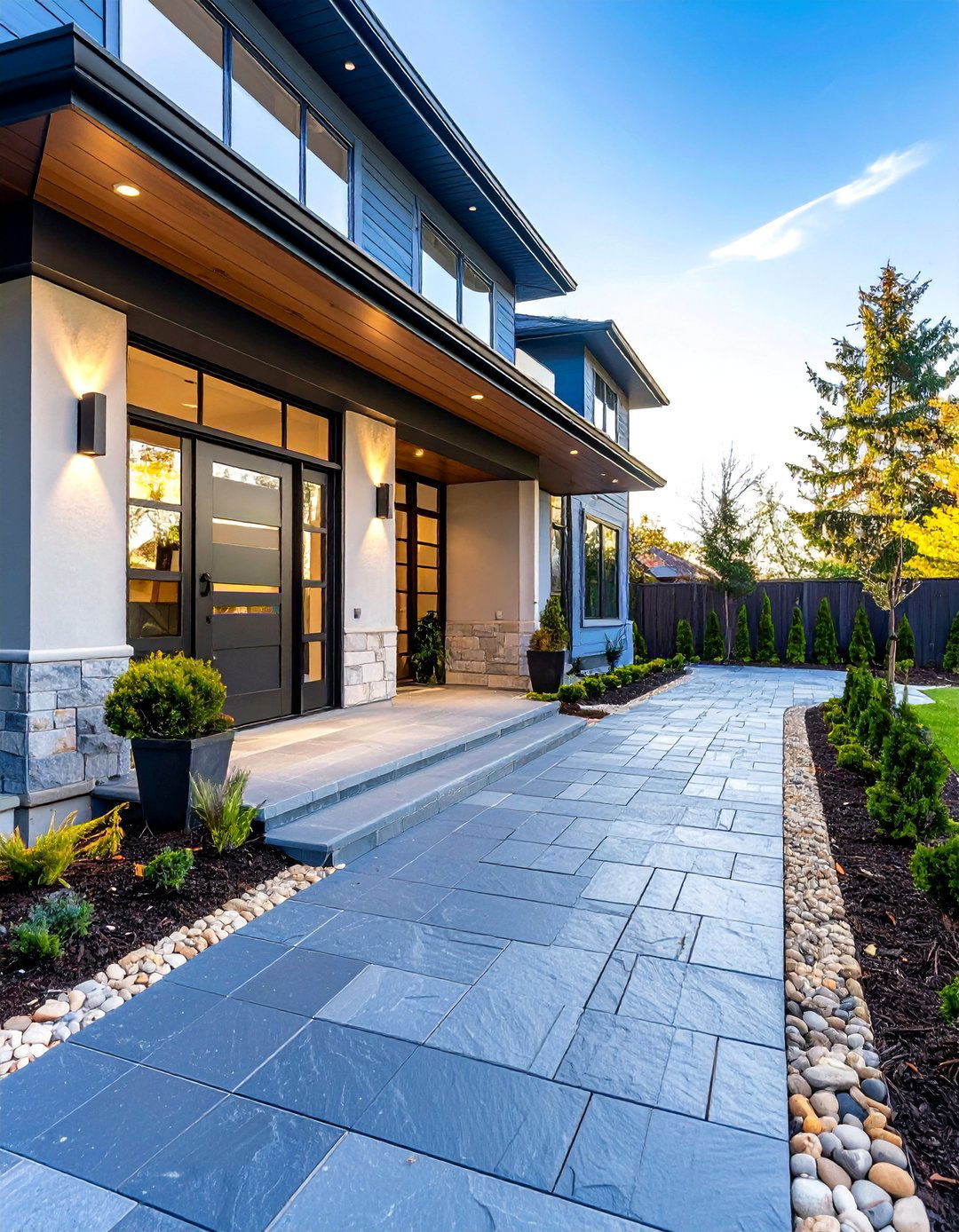
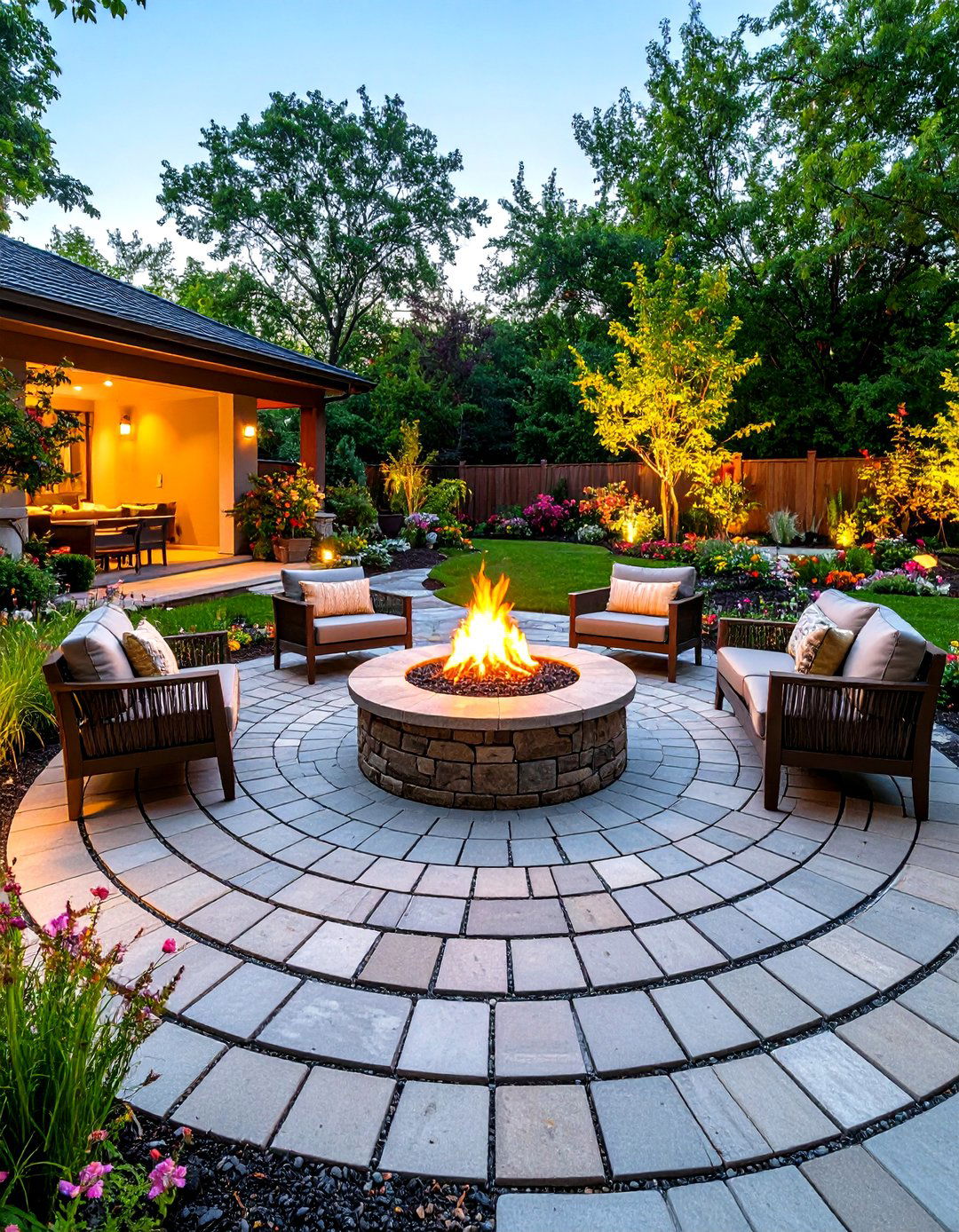
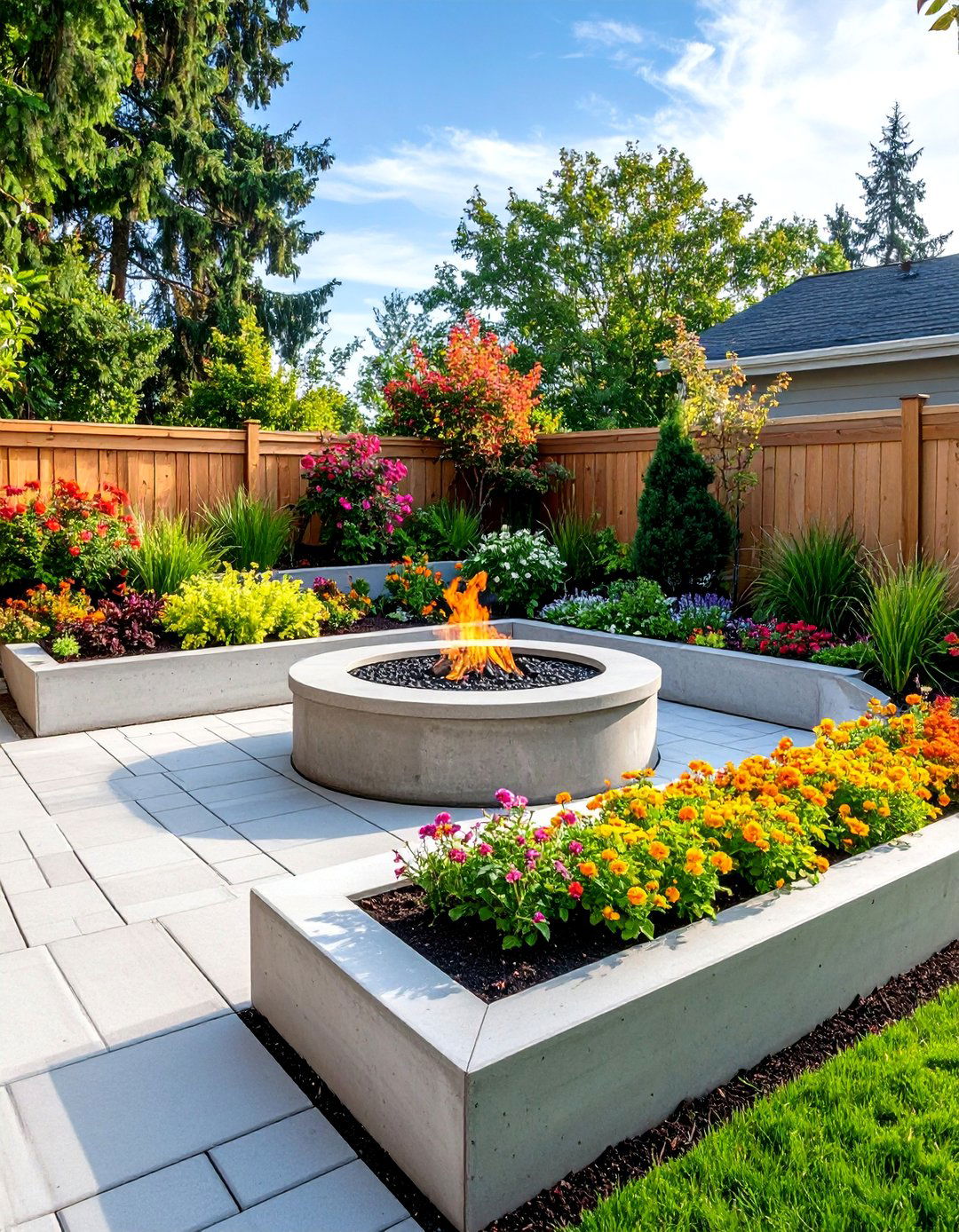

Leave a Reply